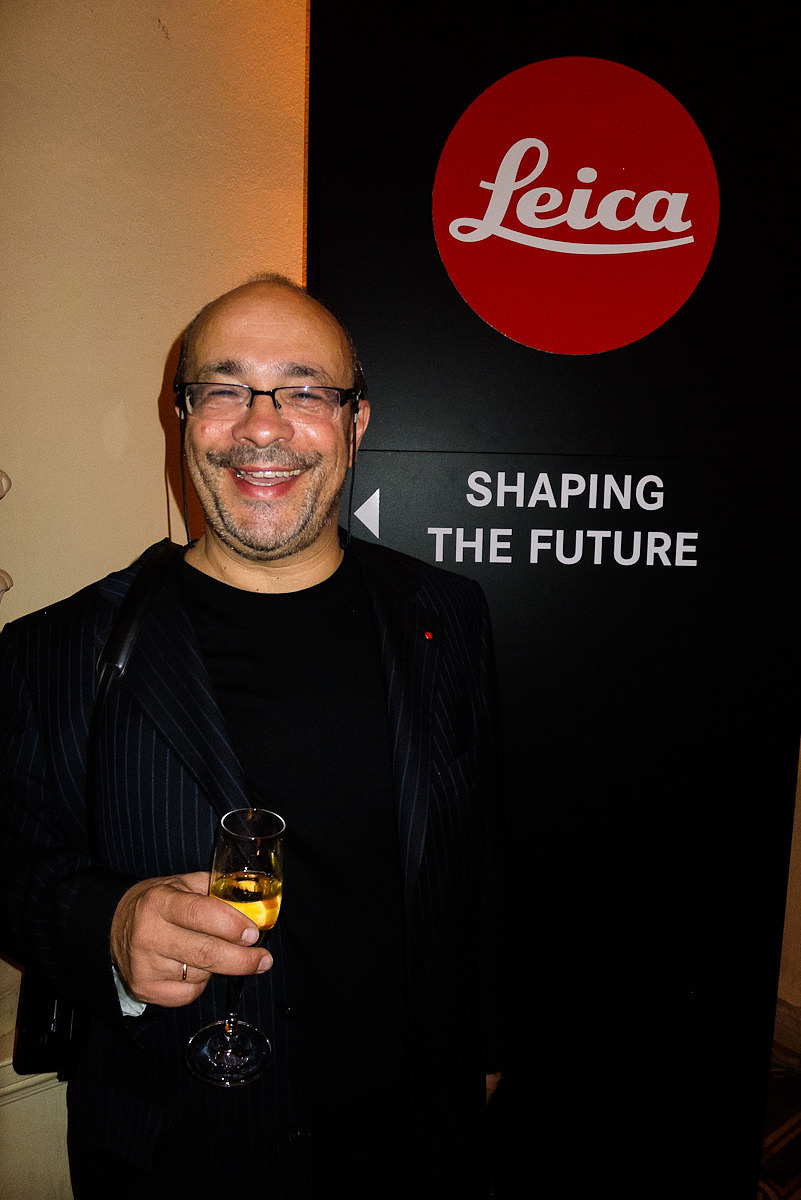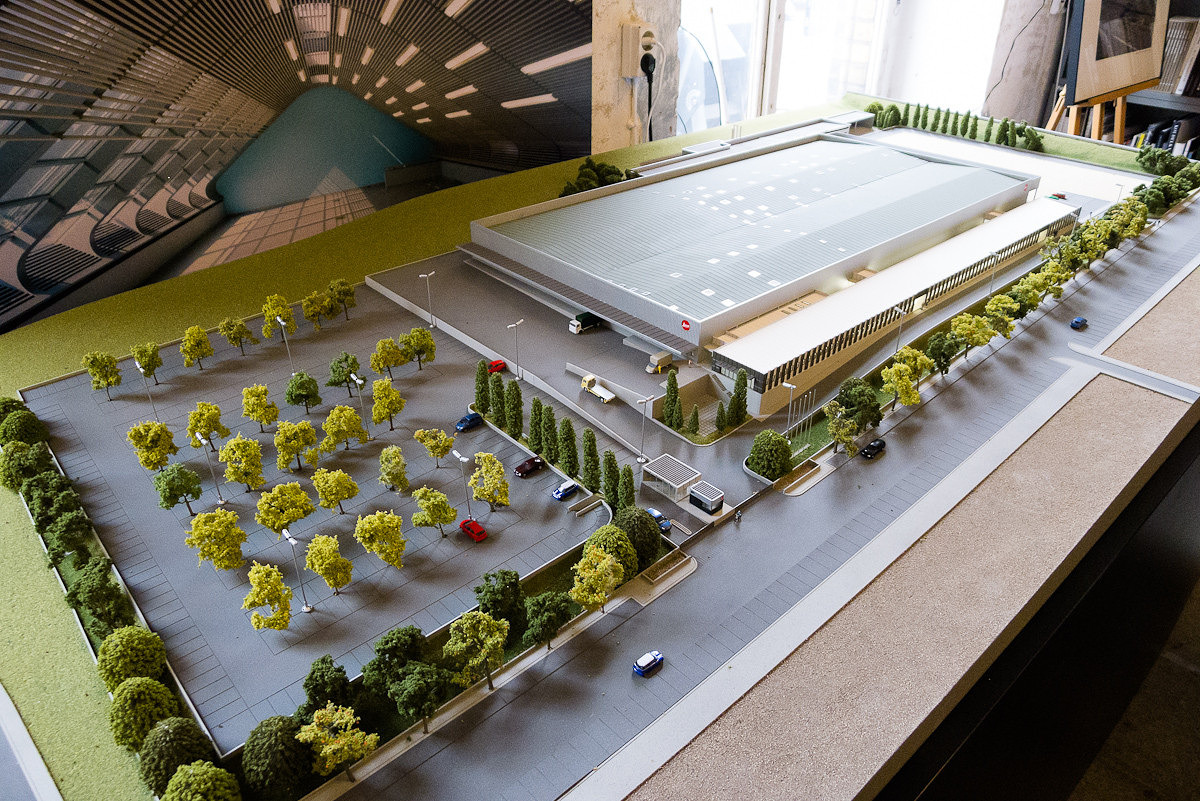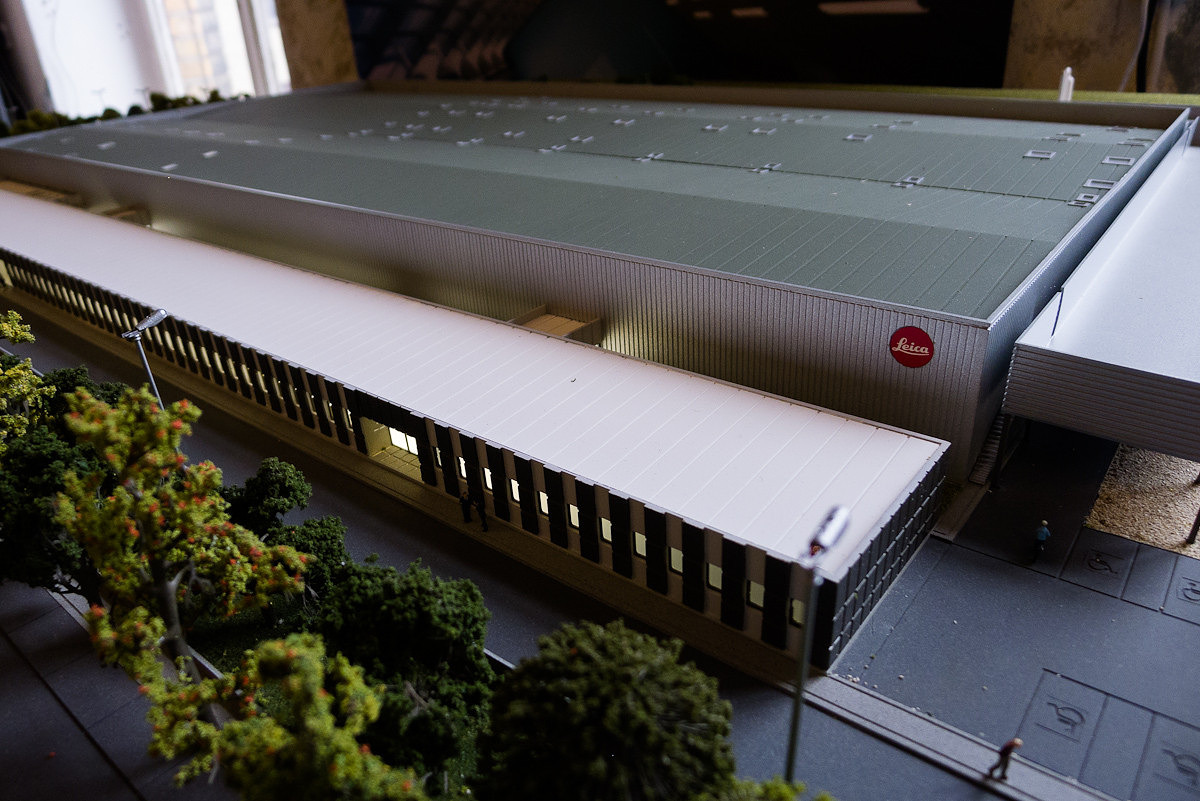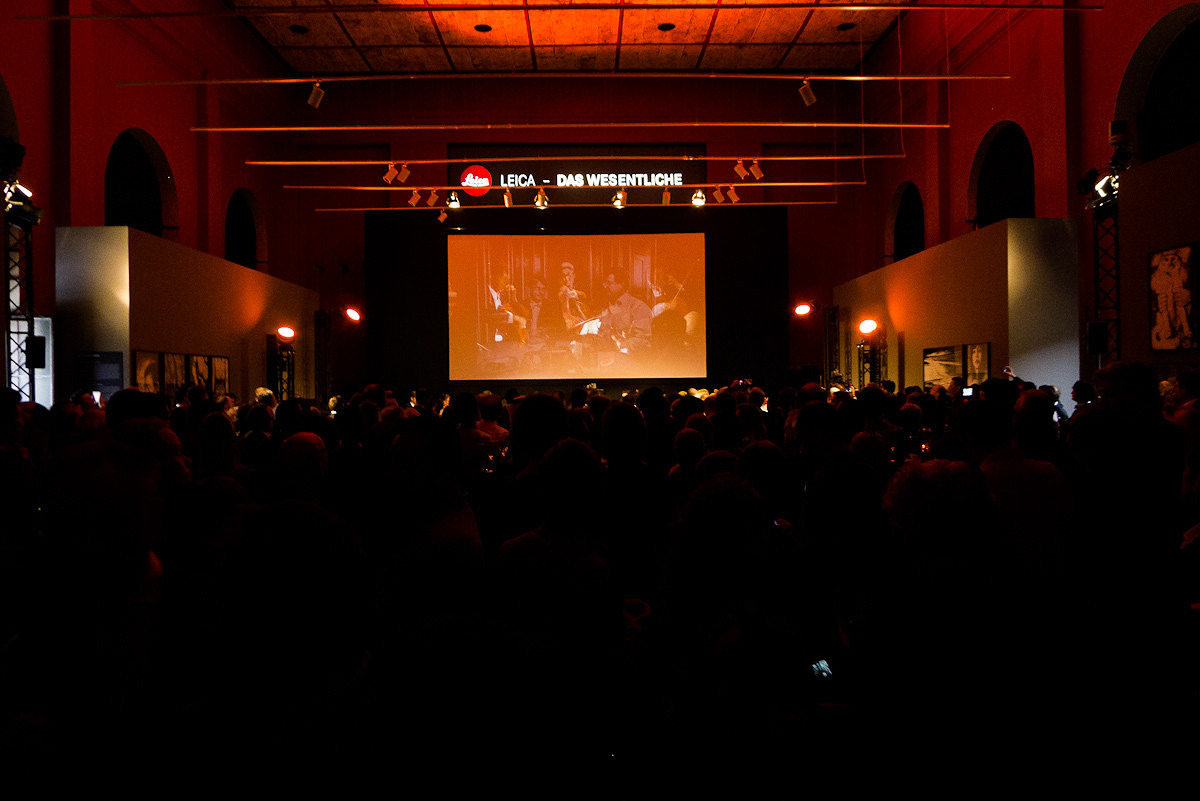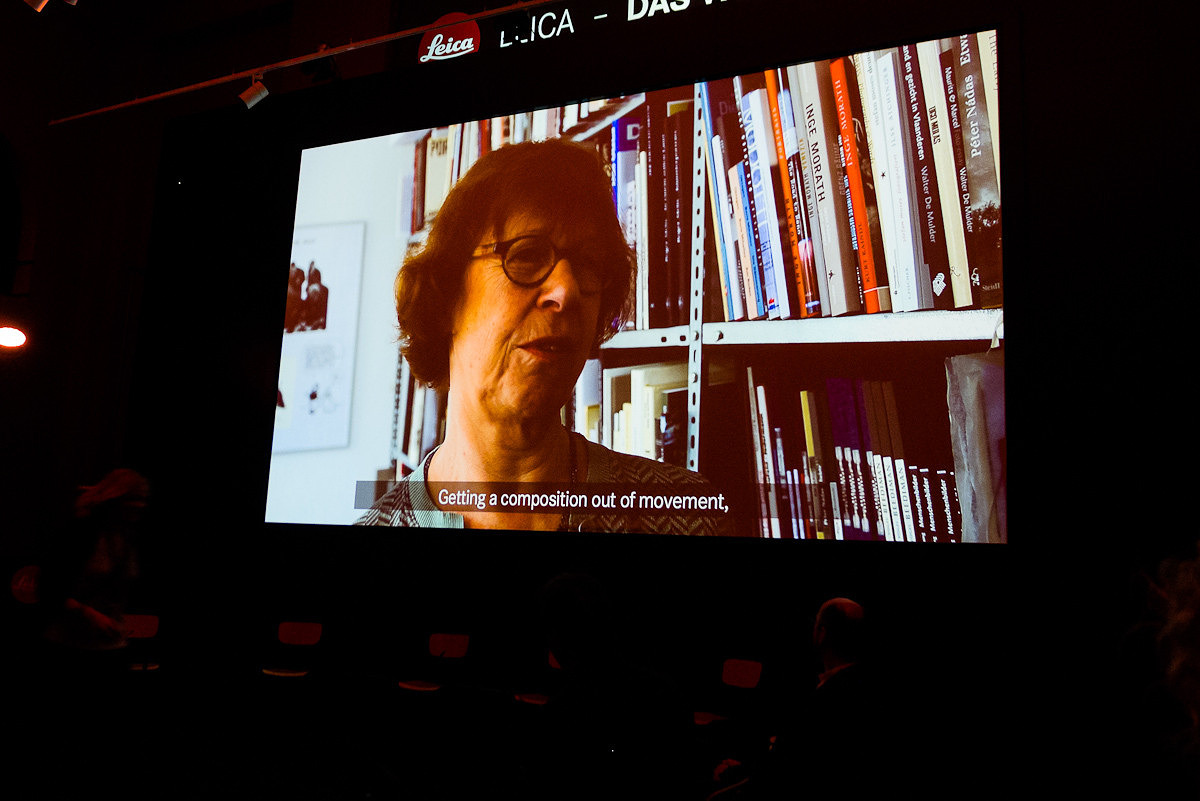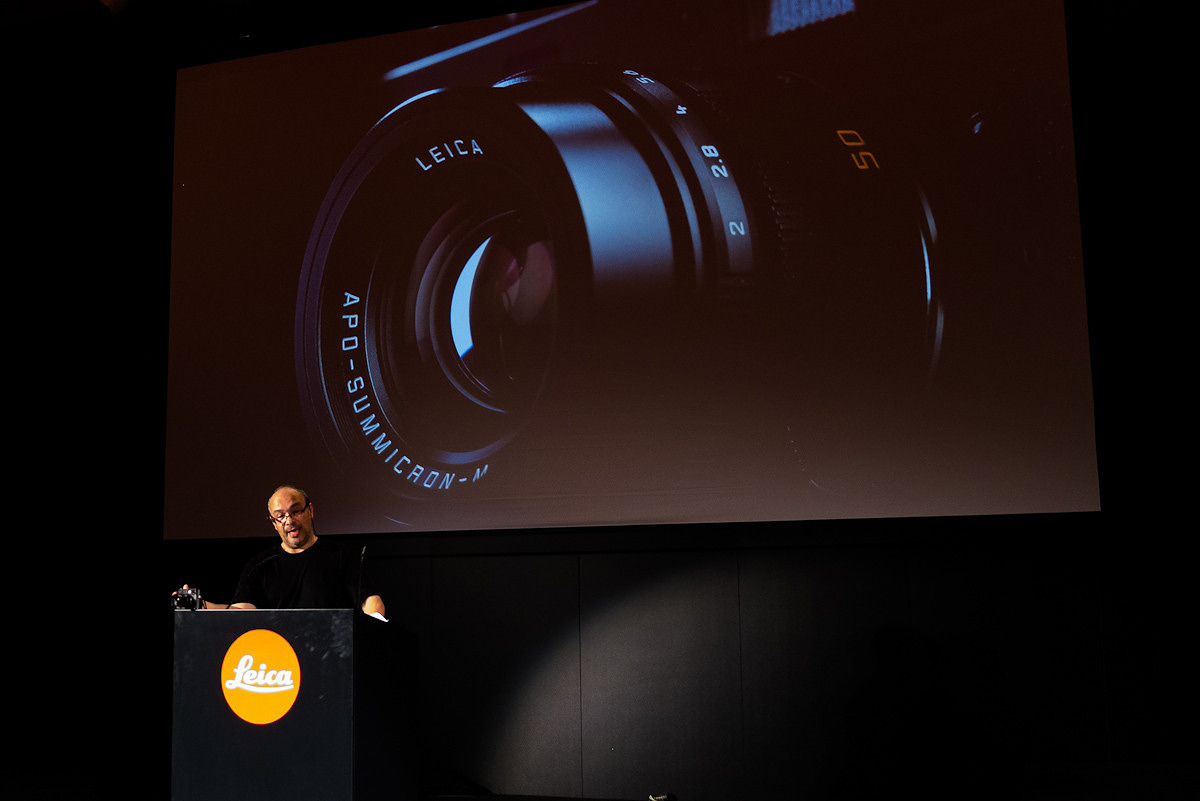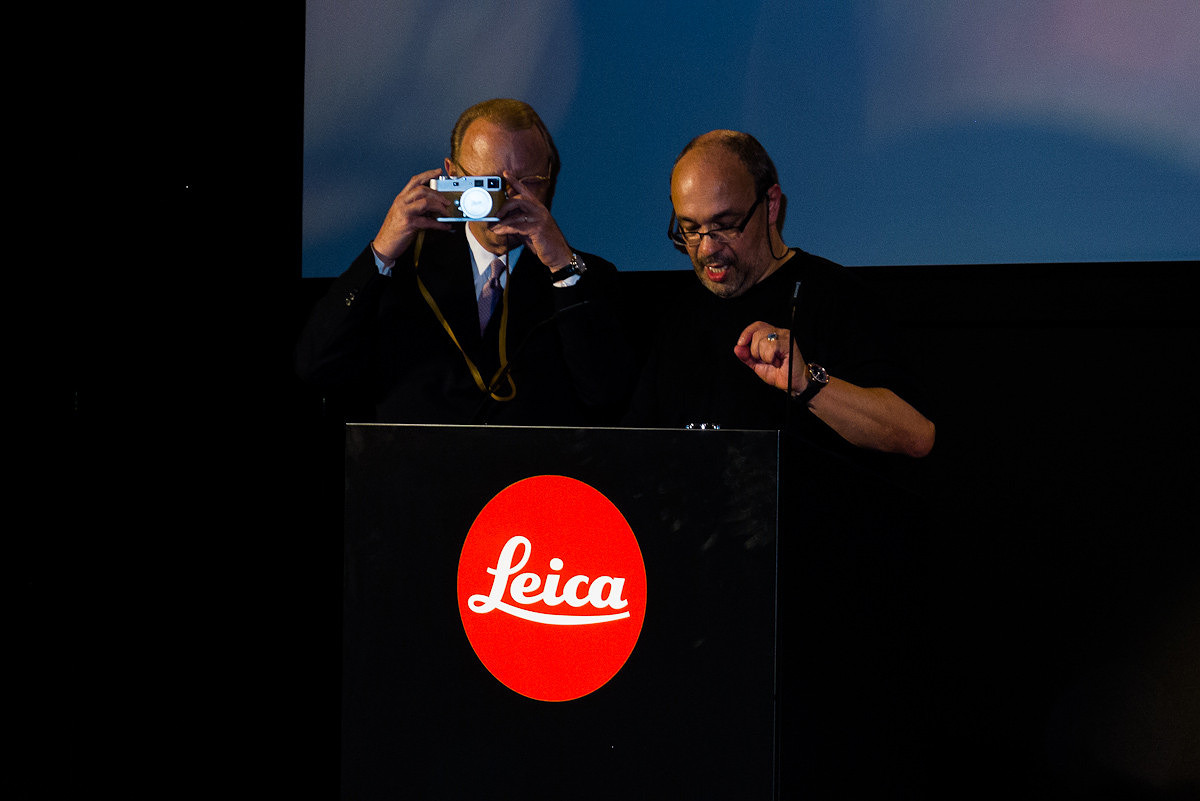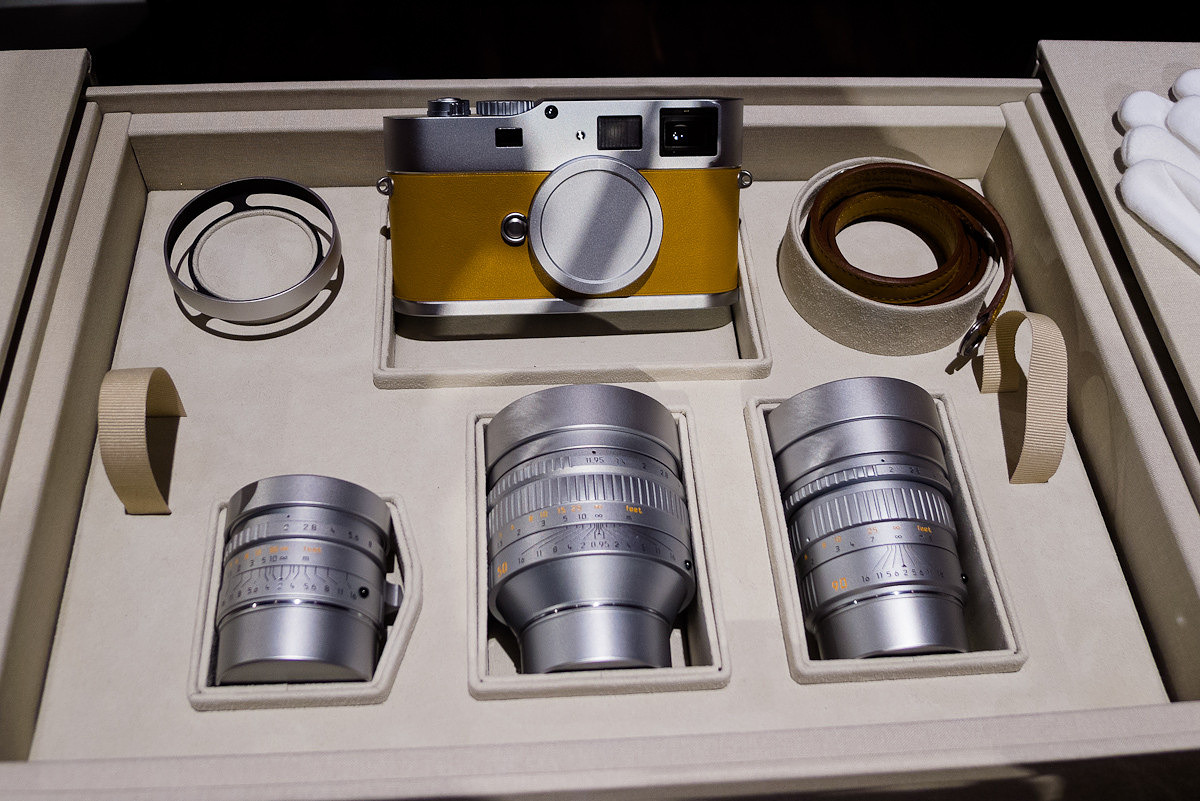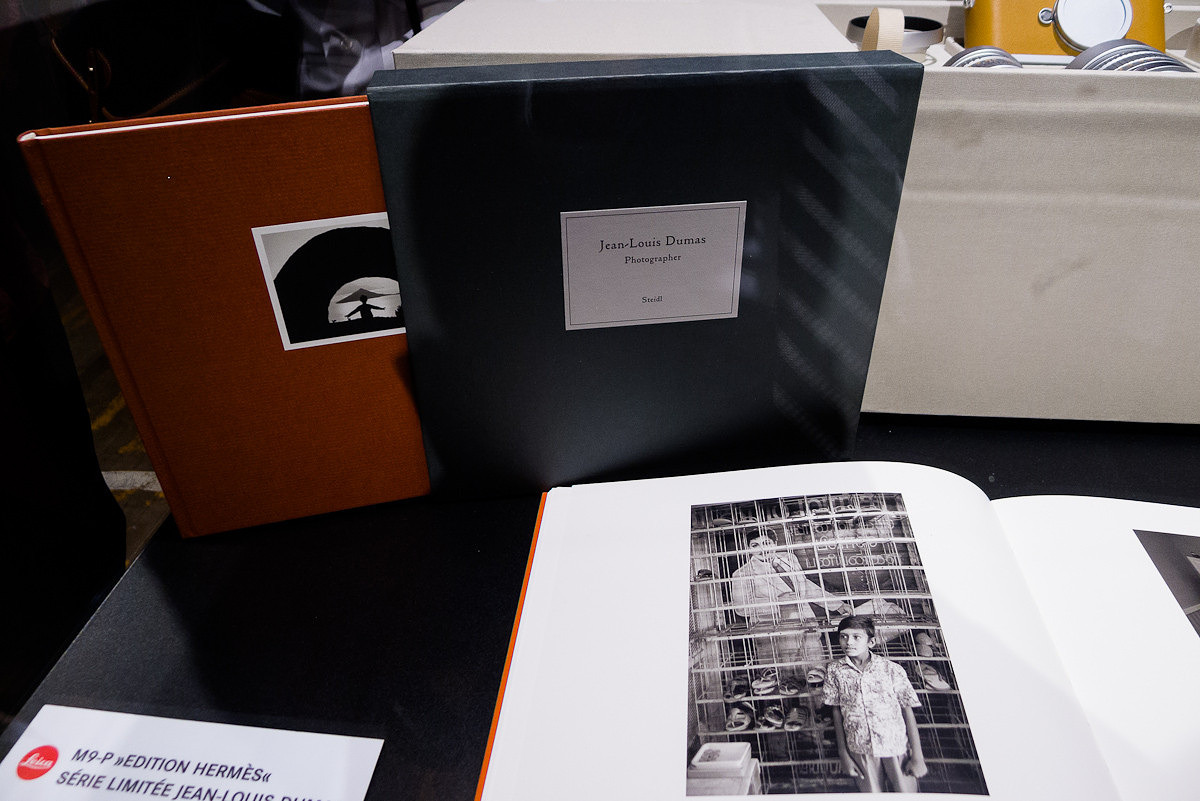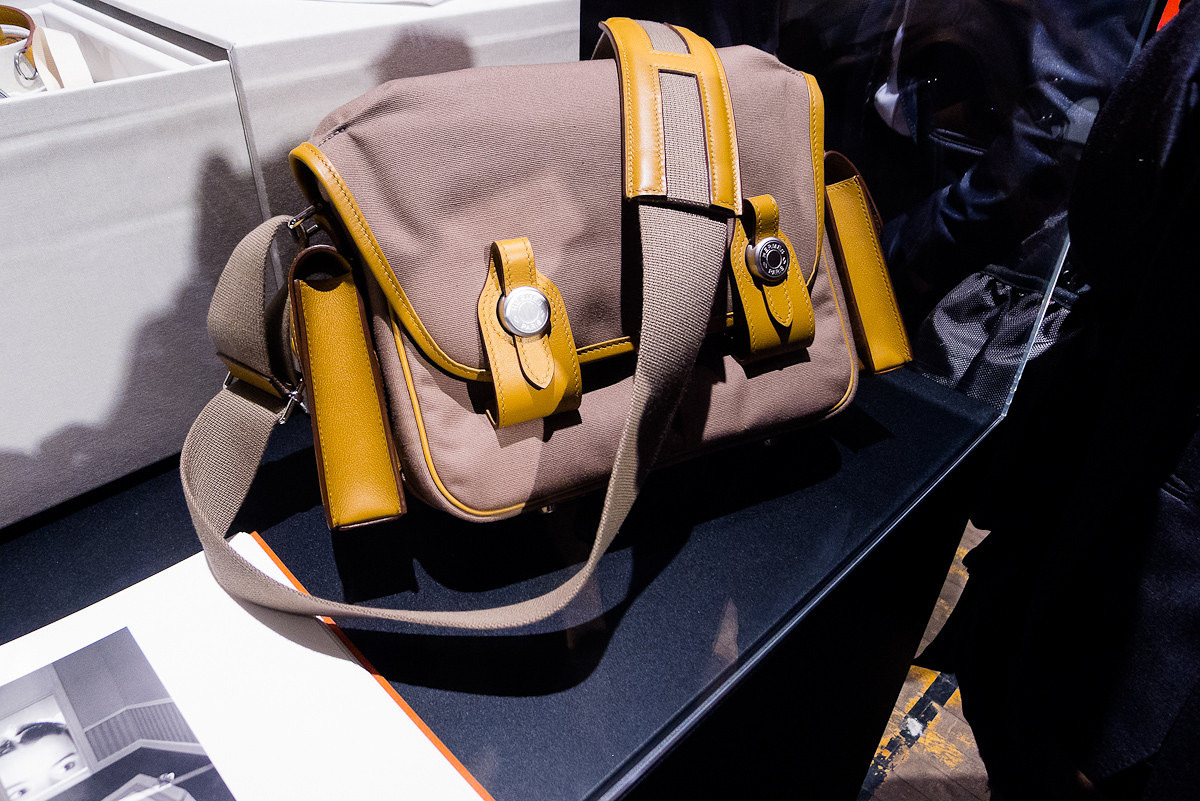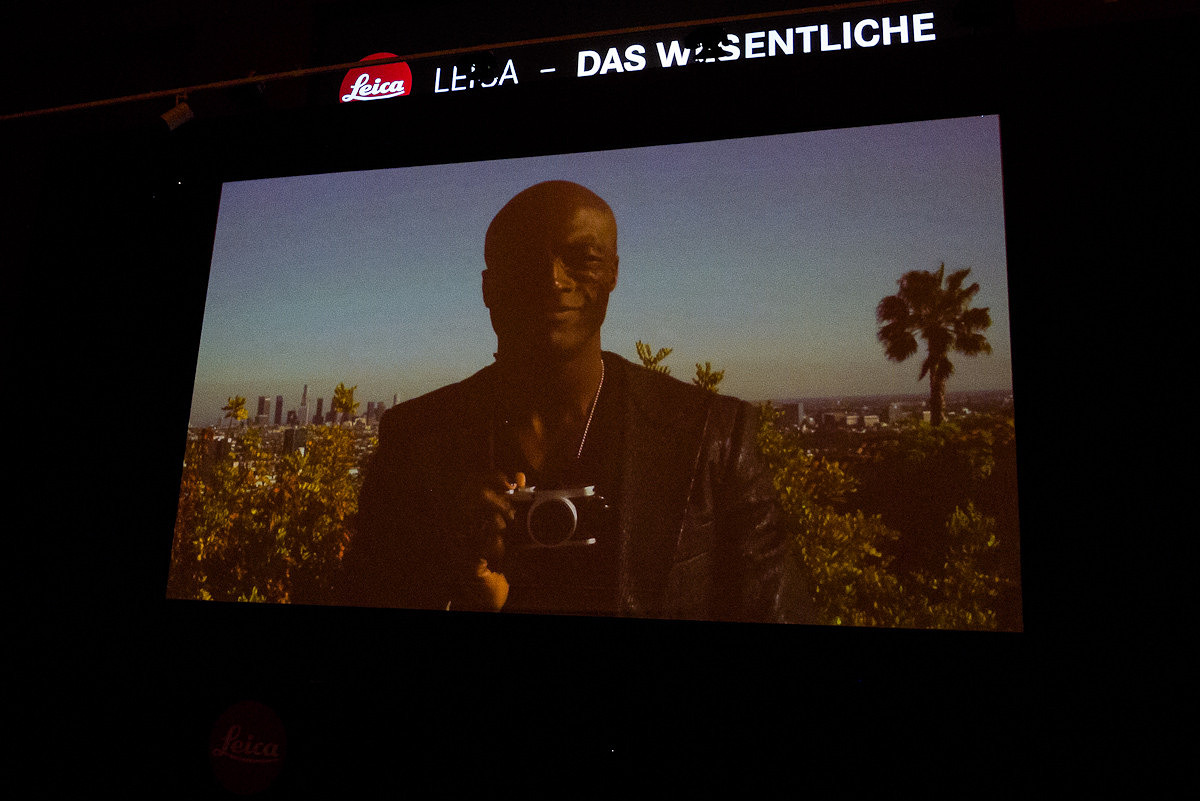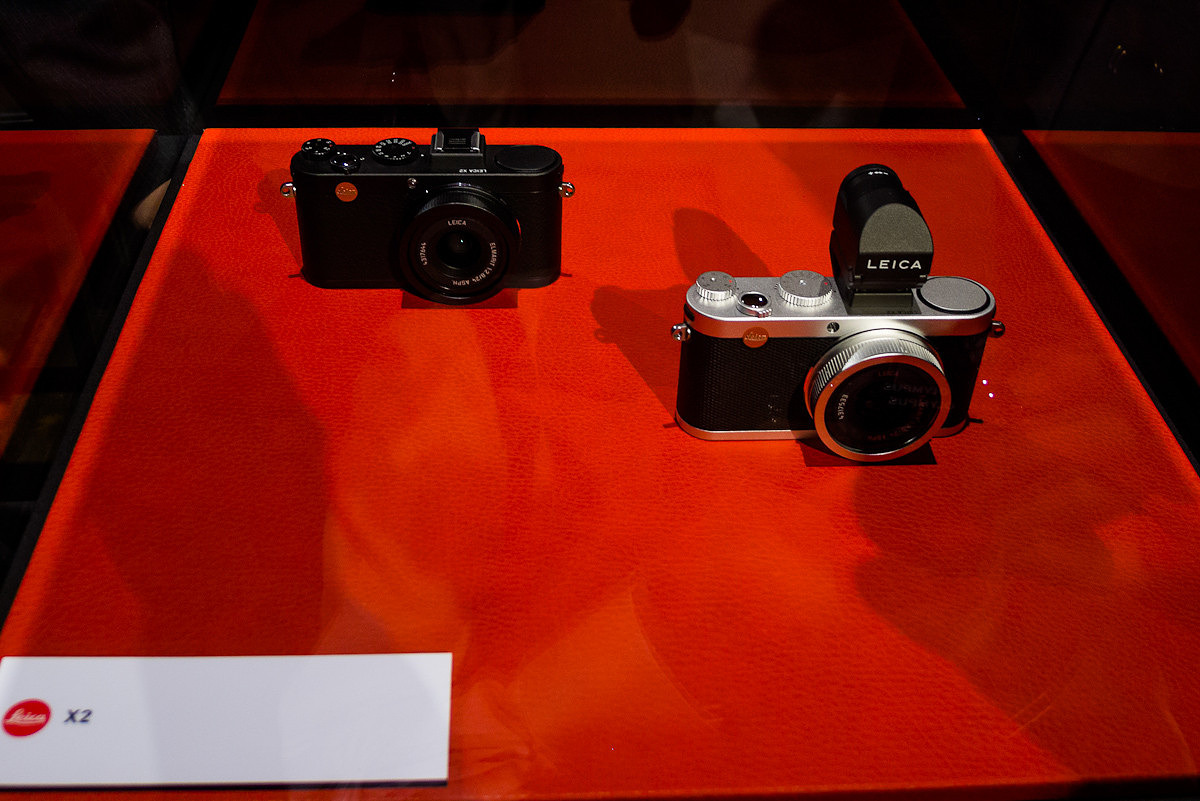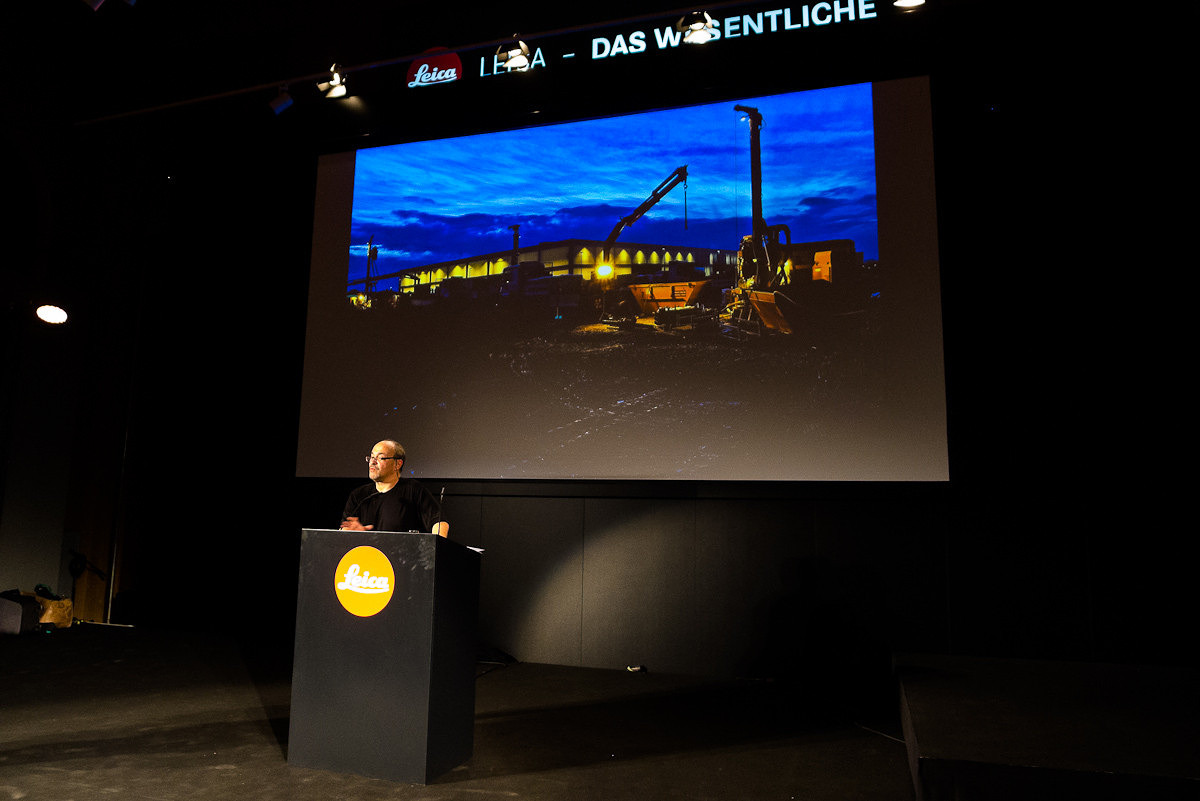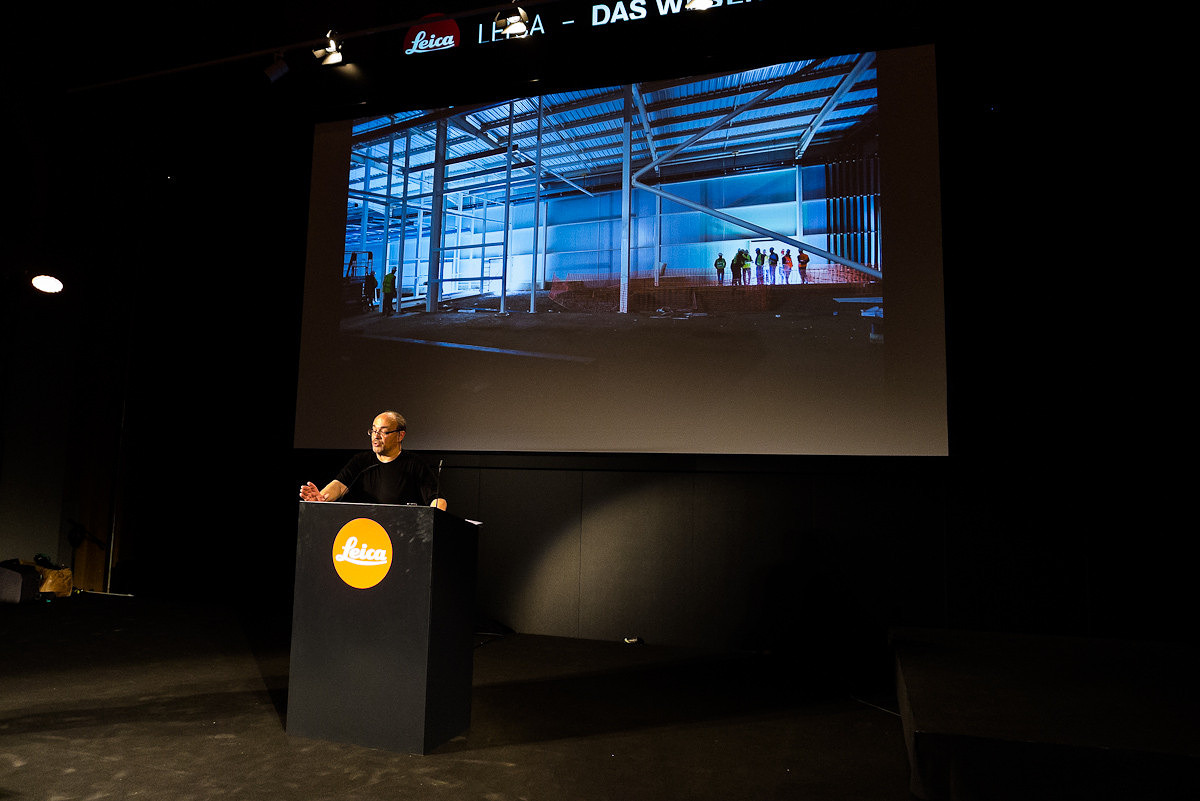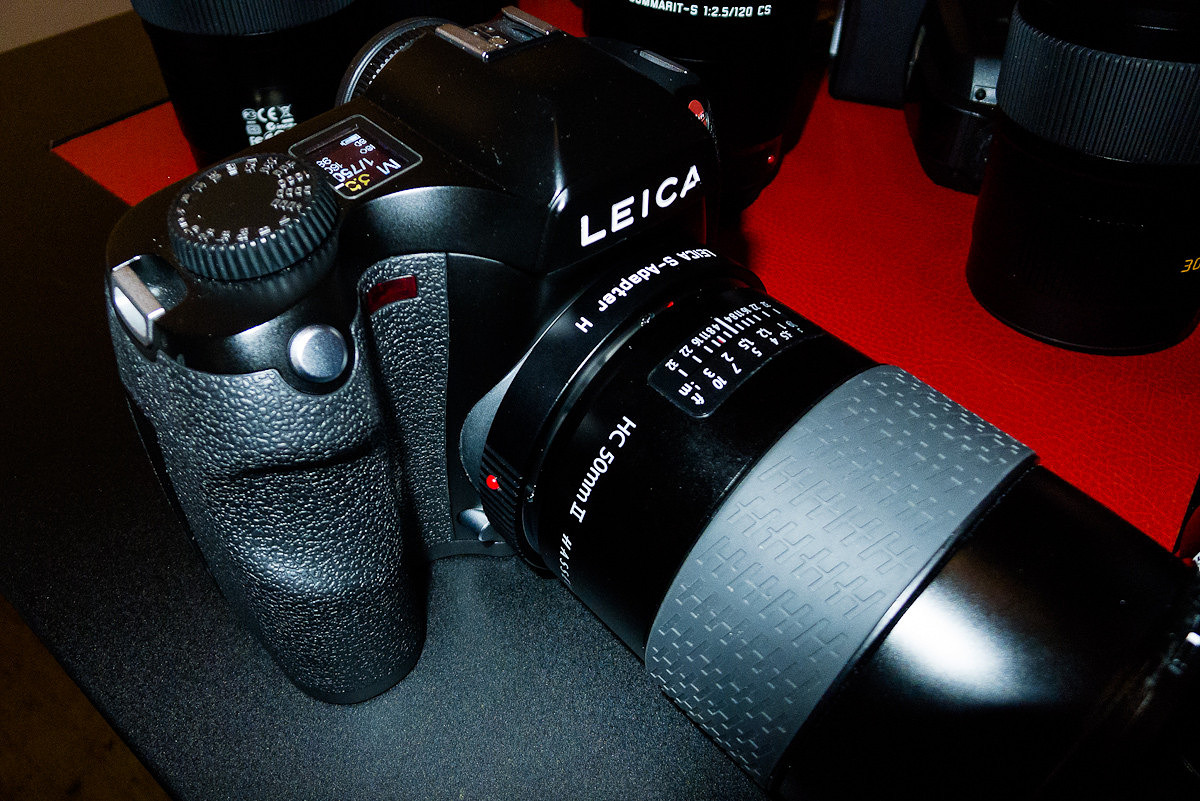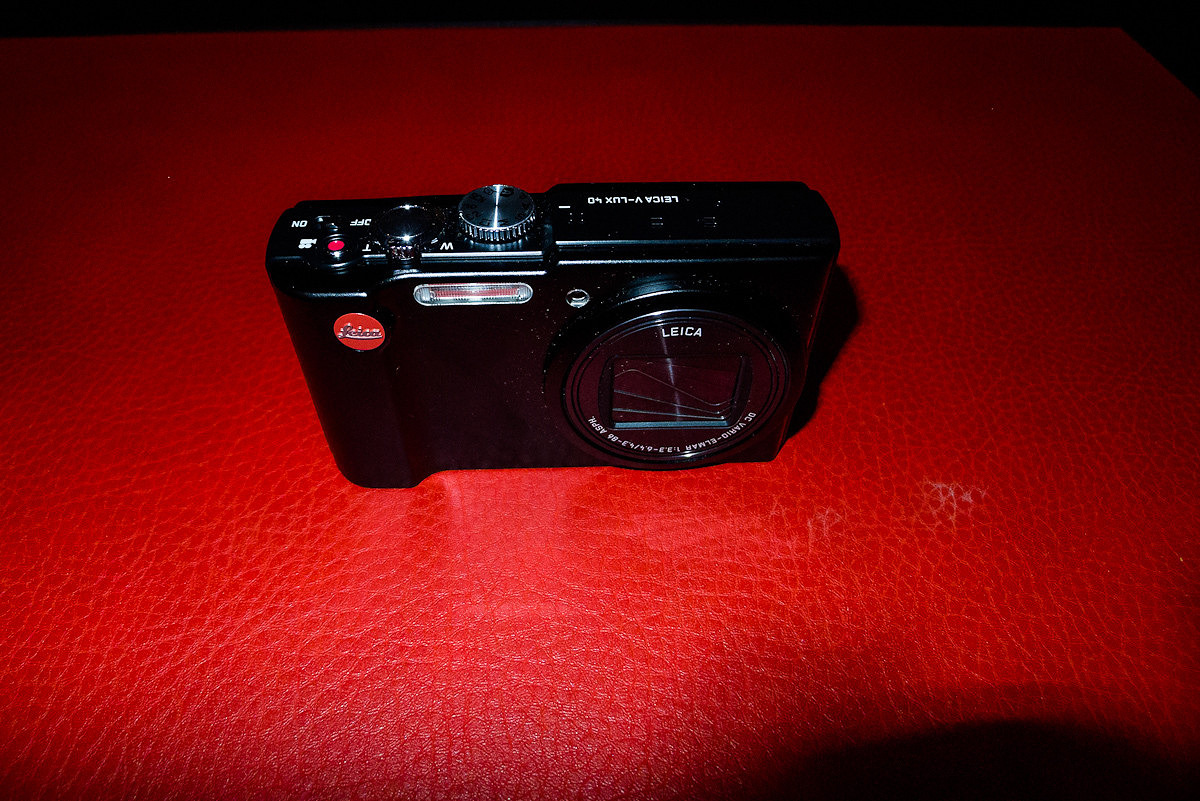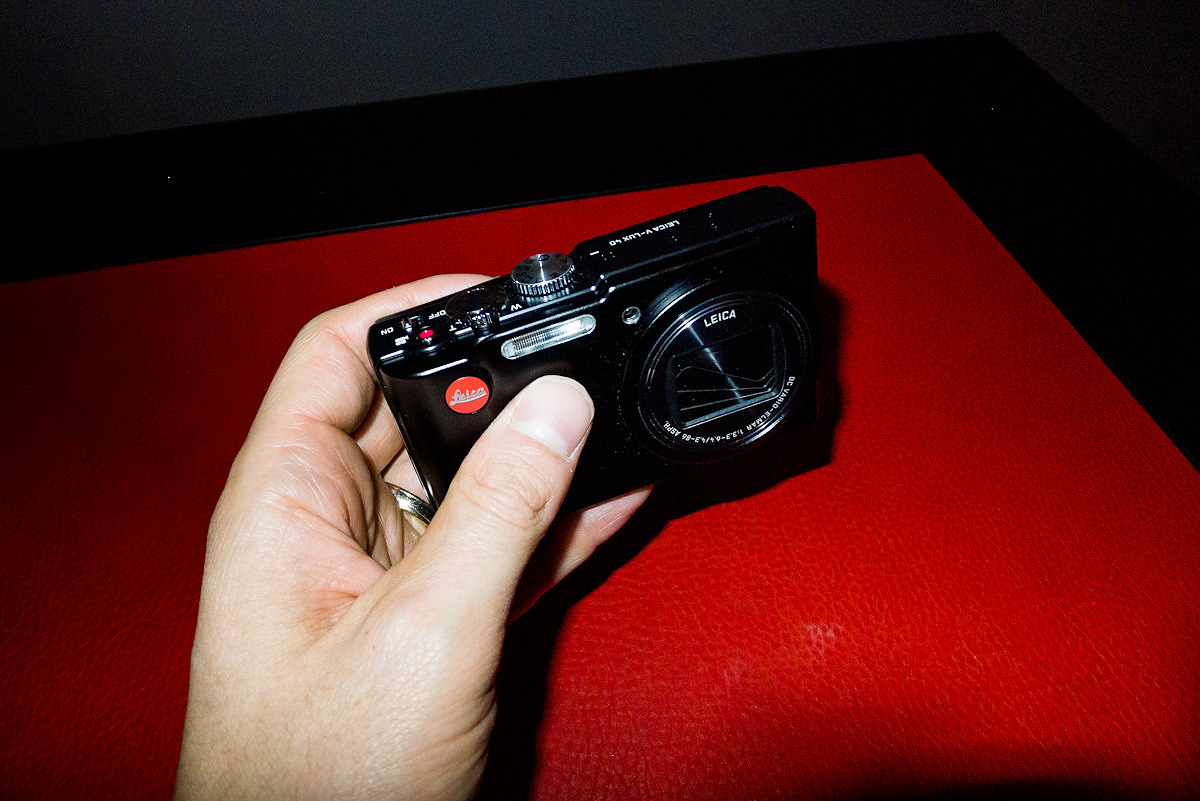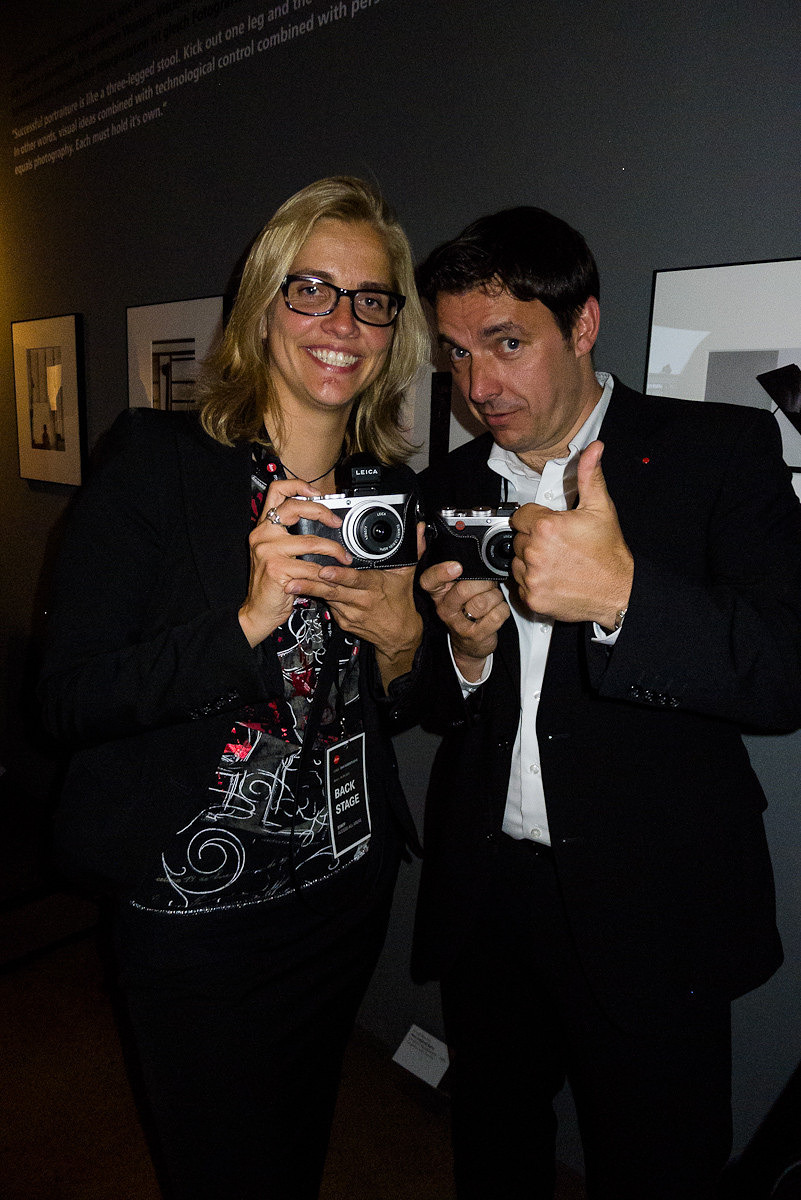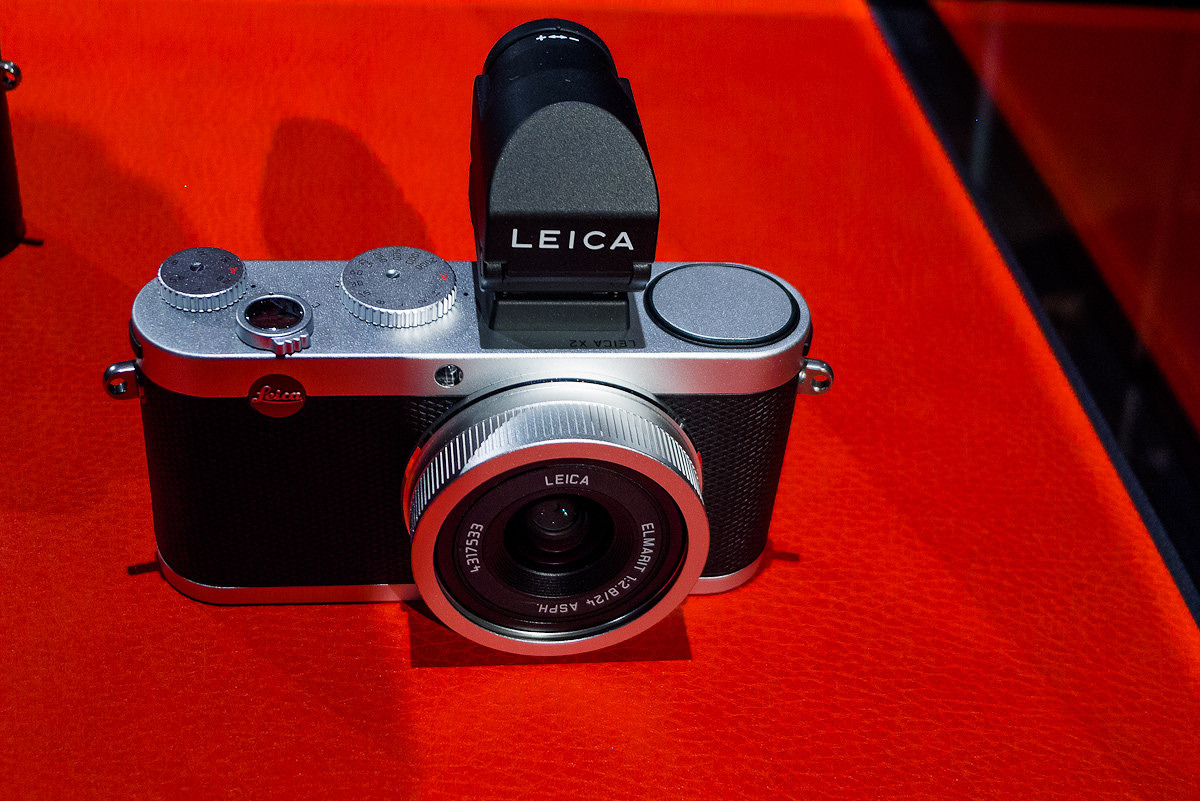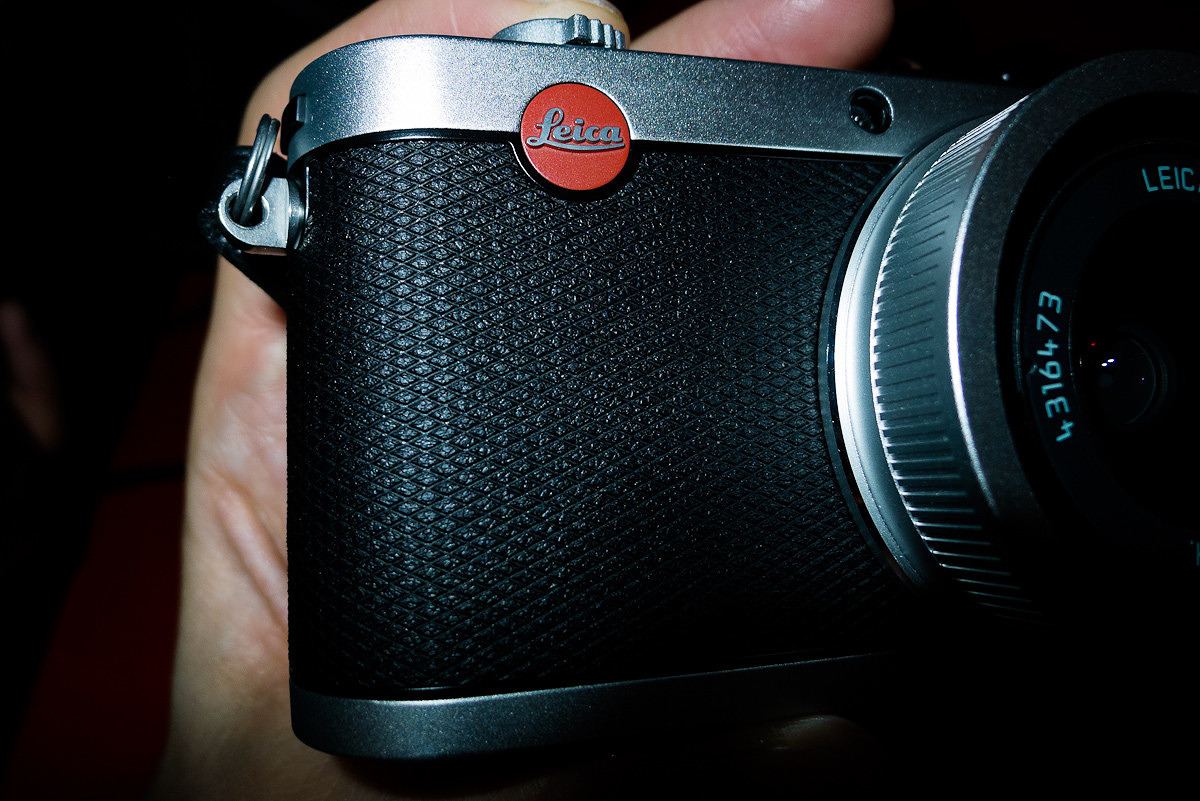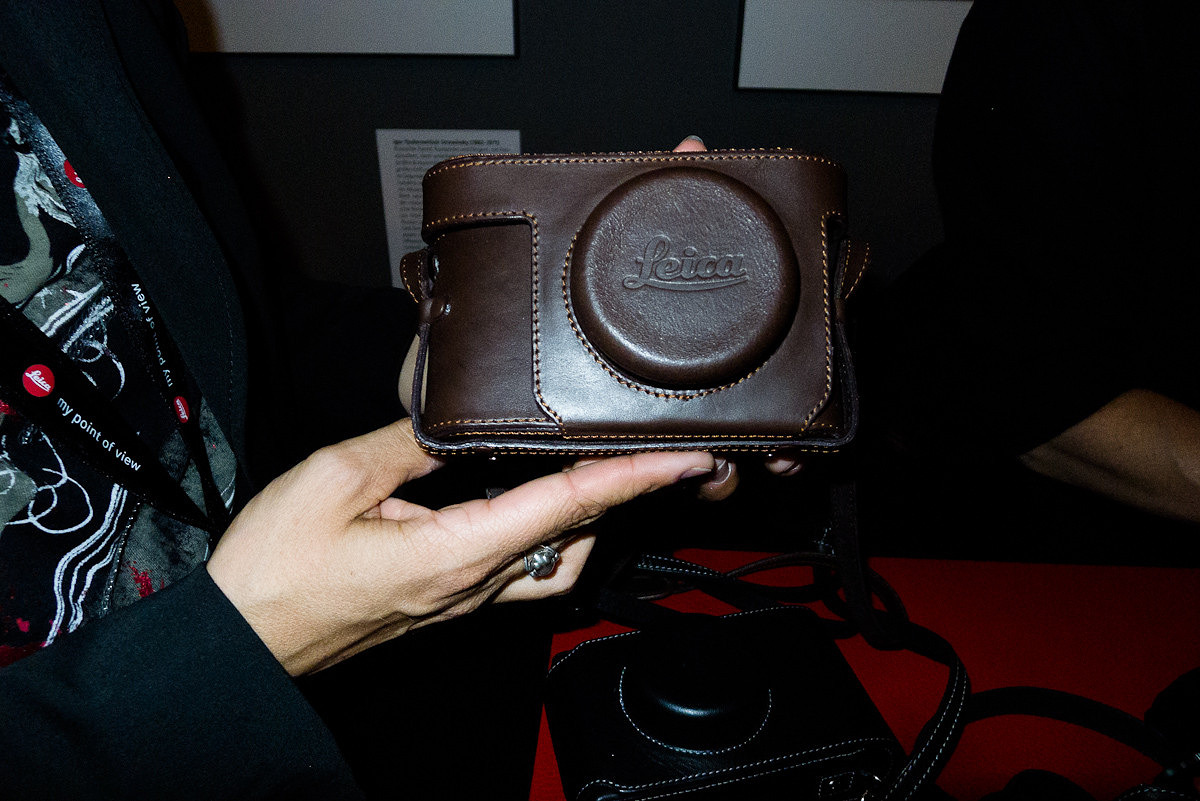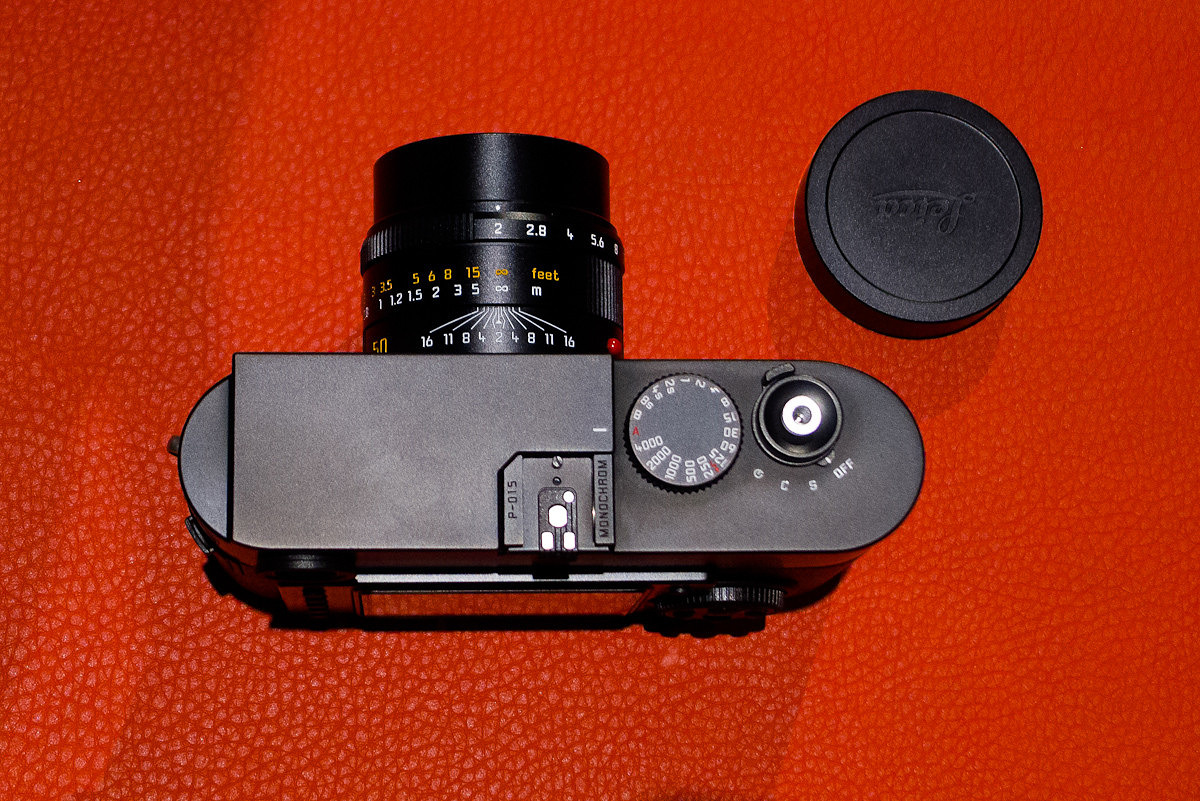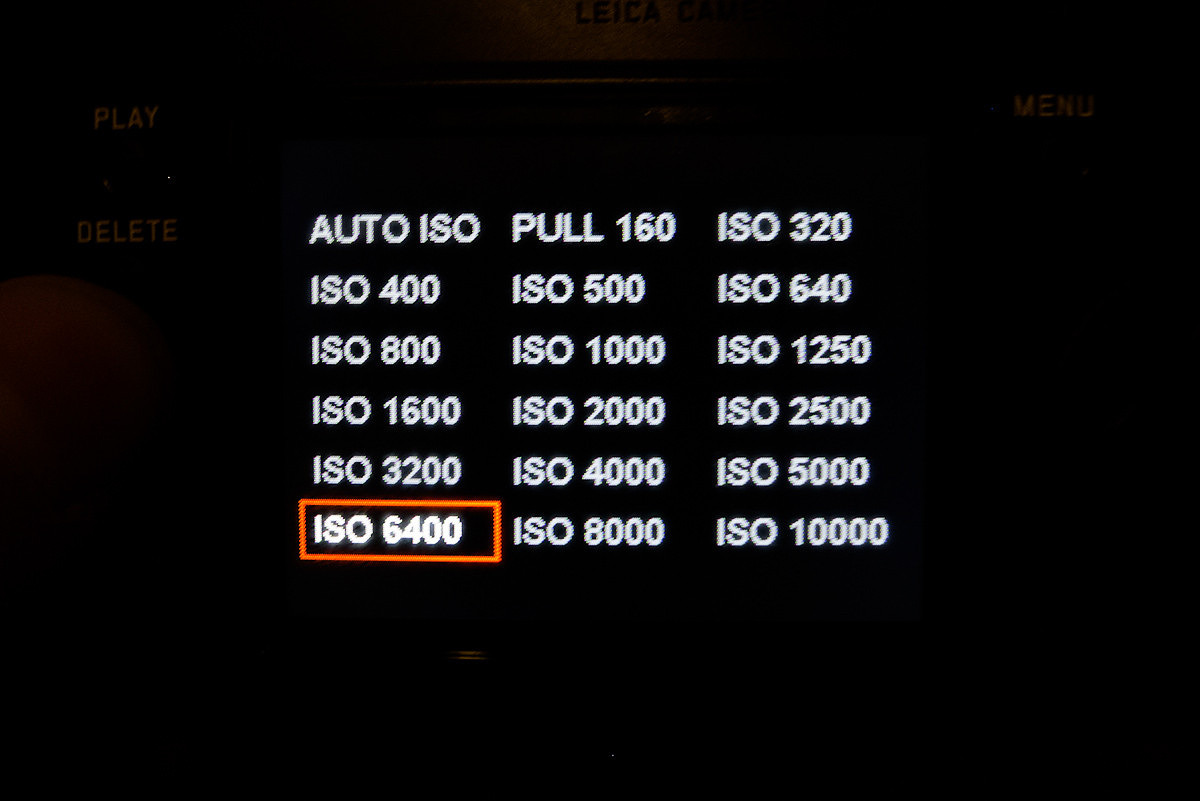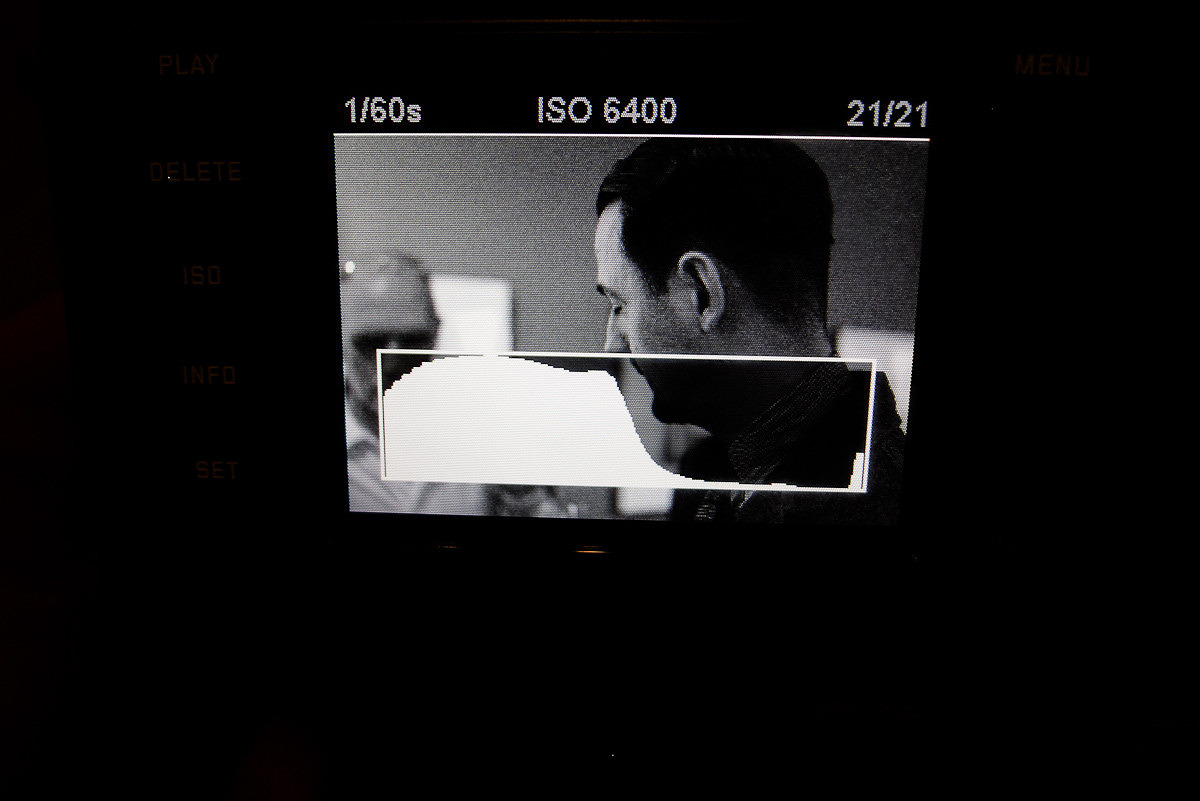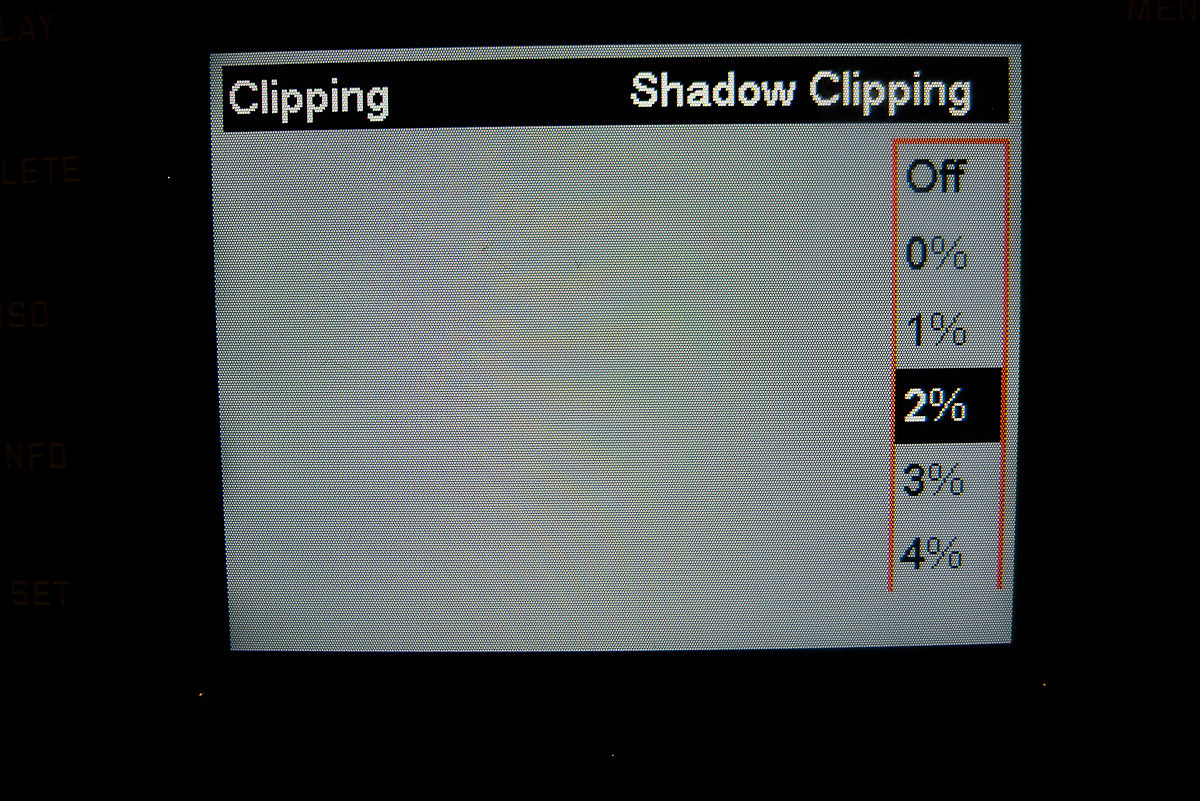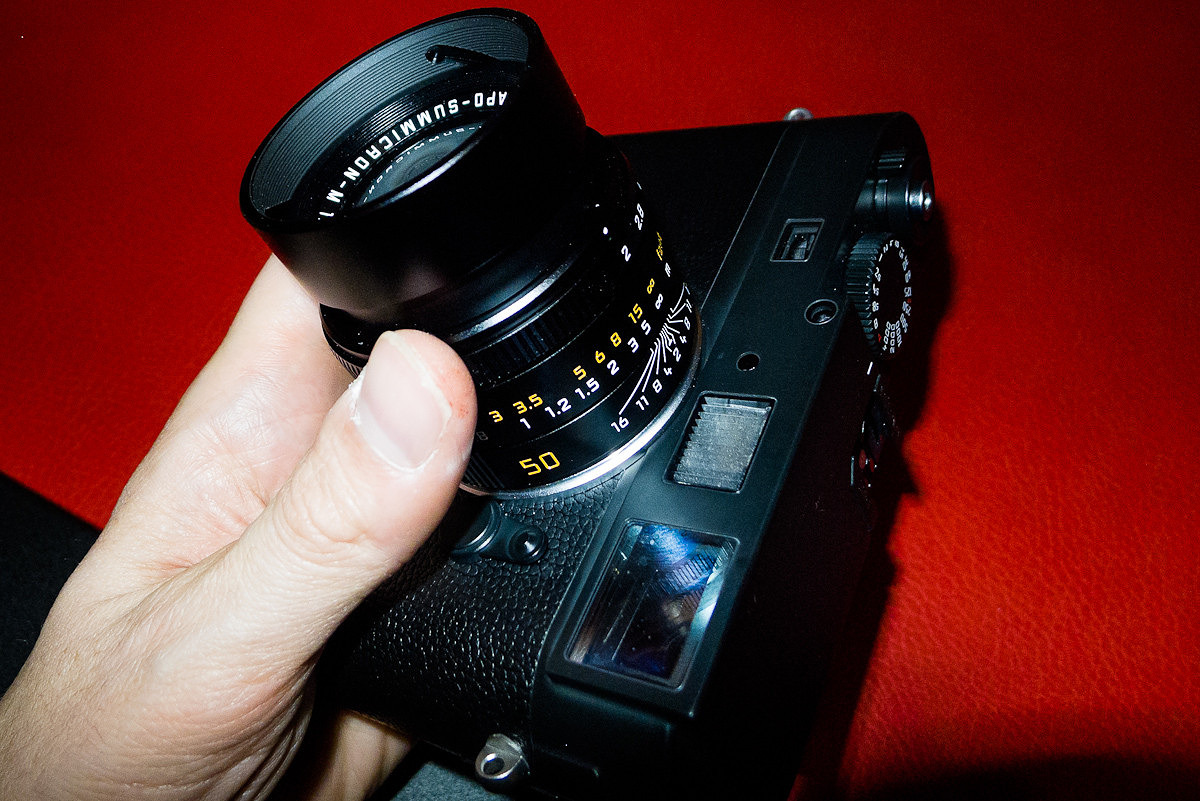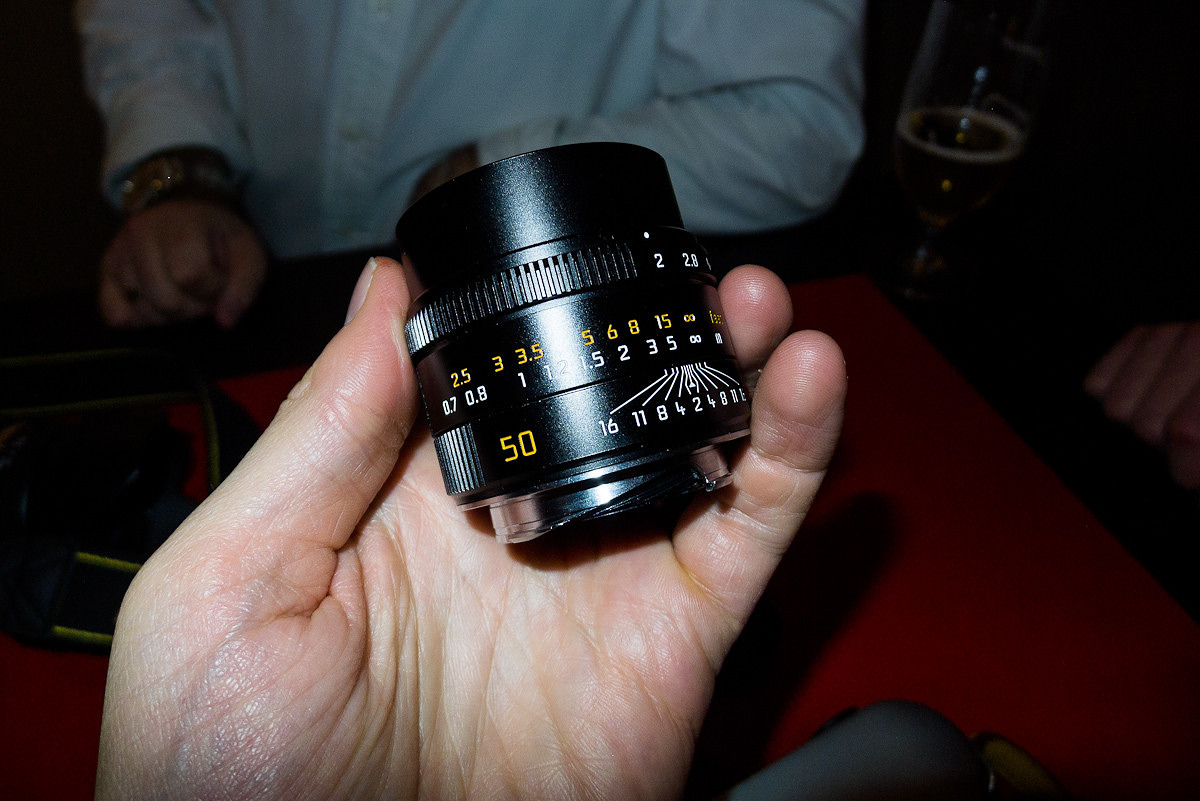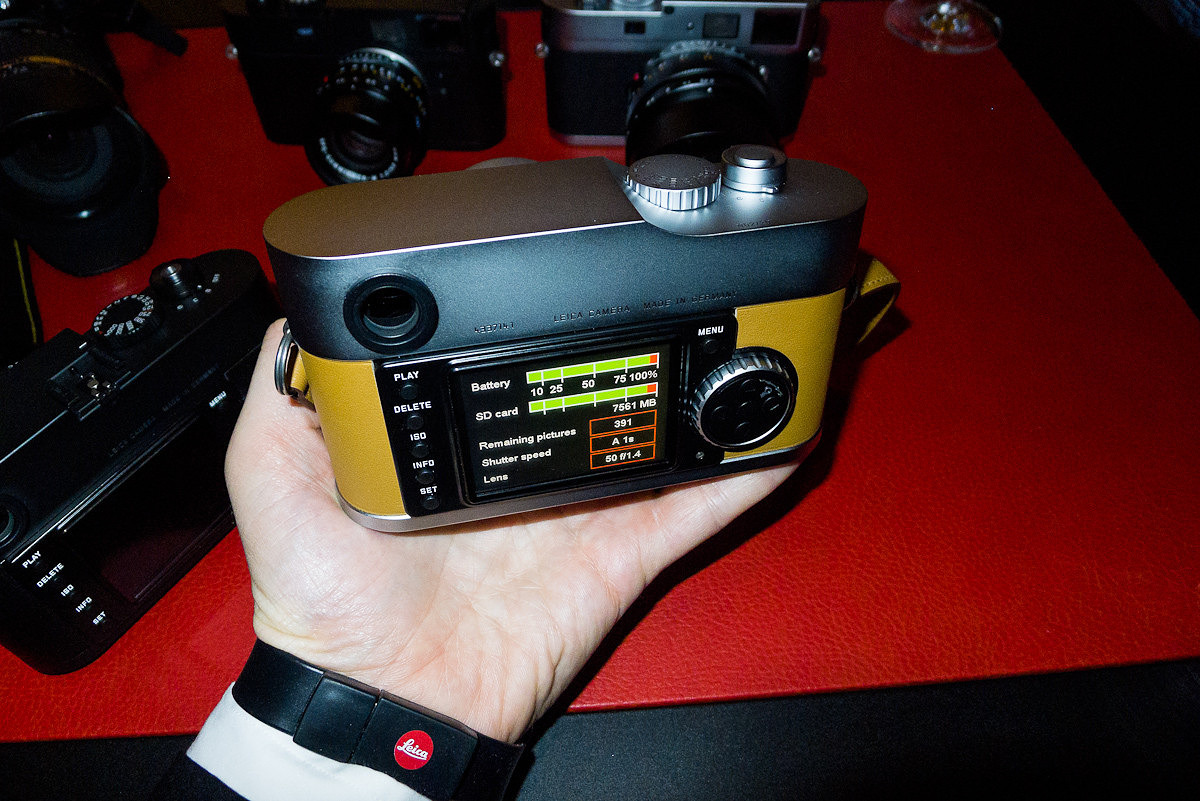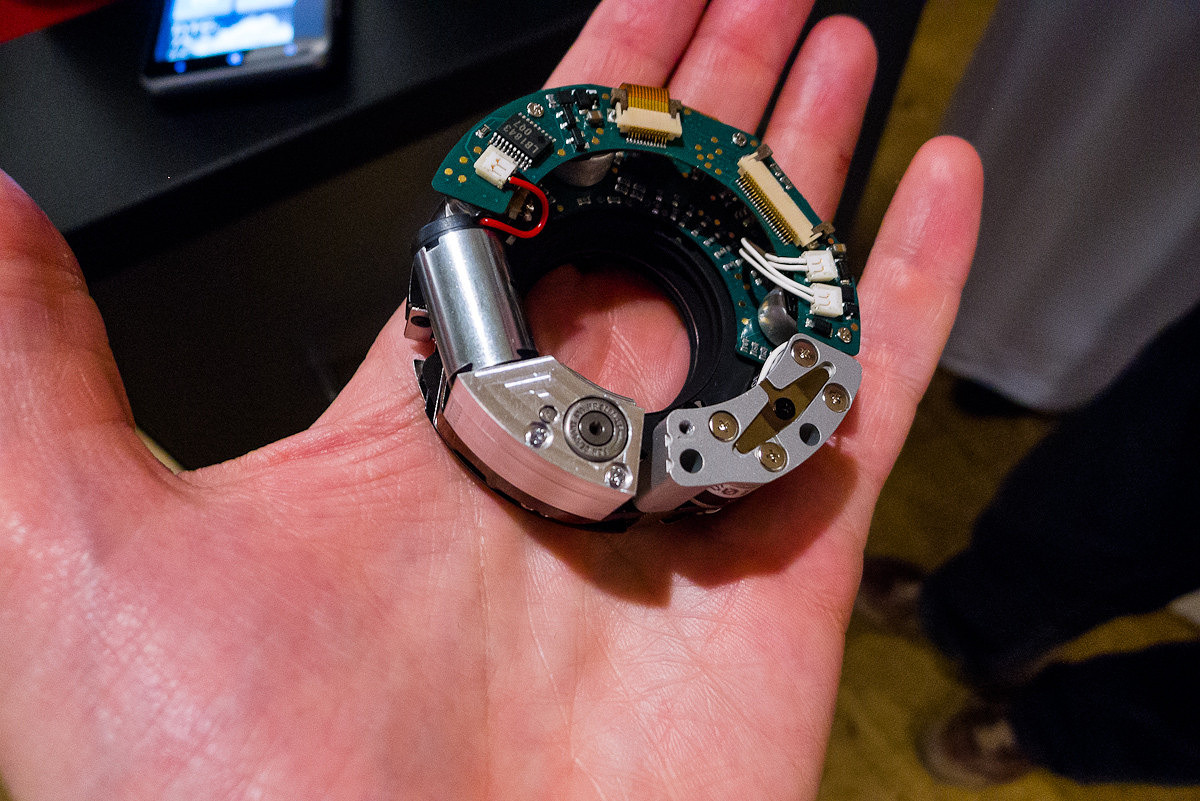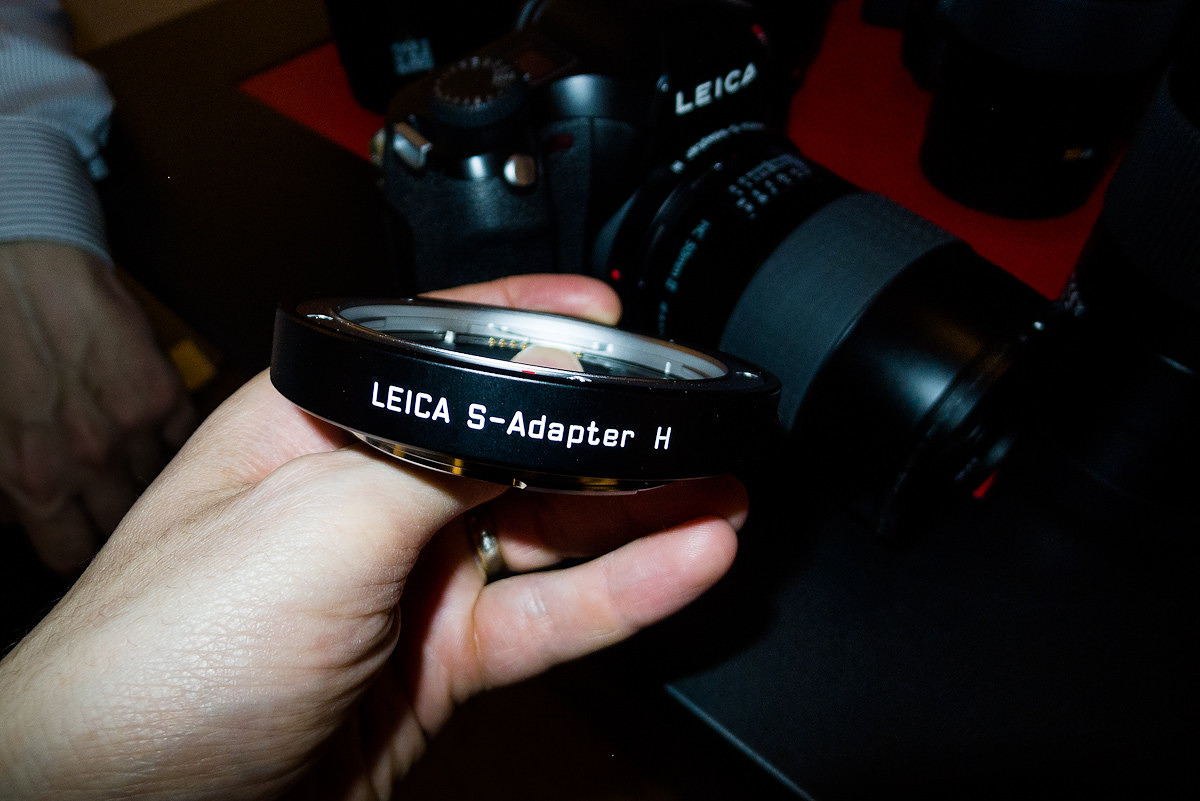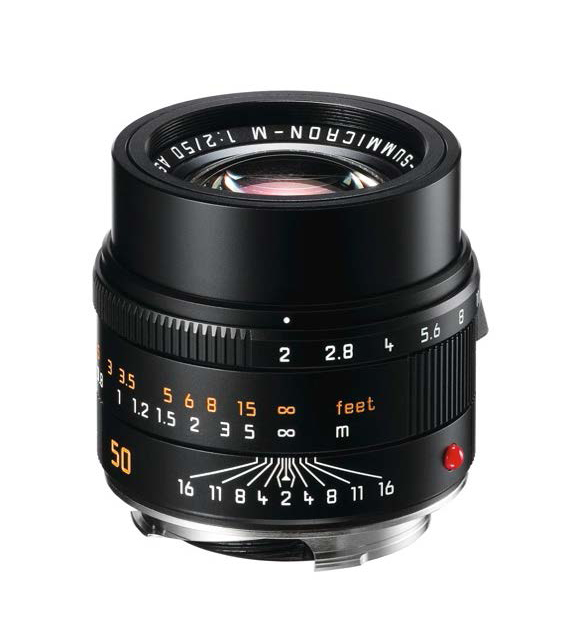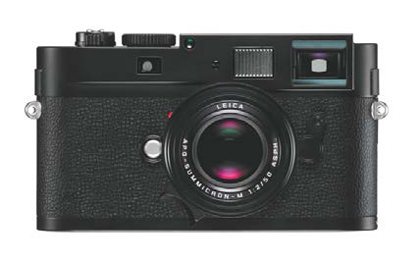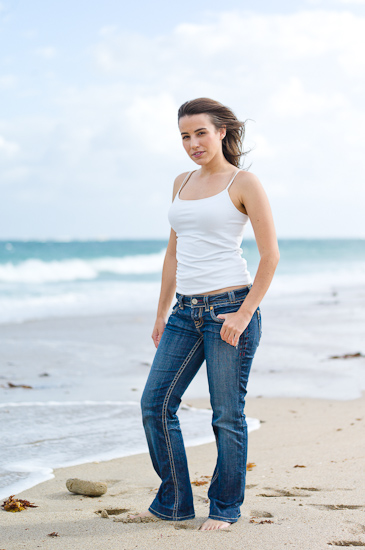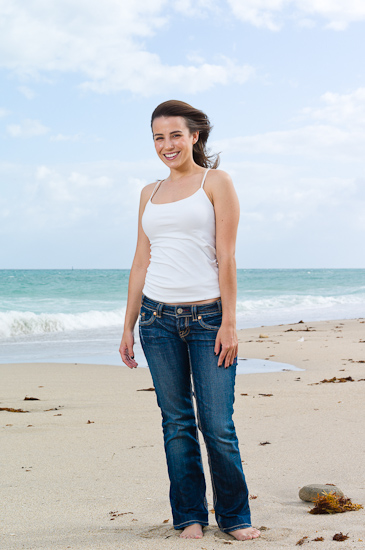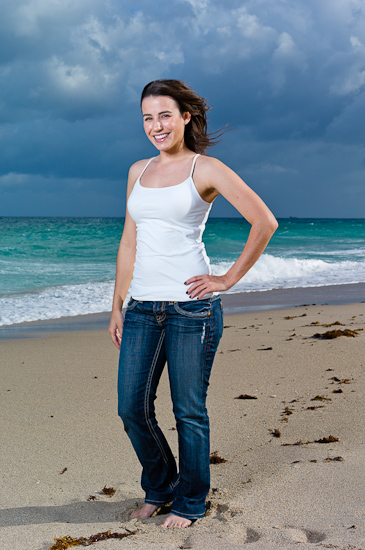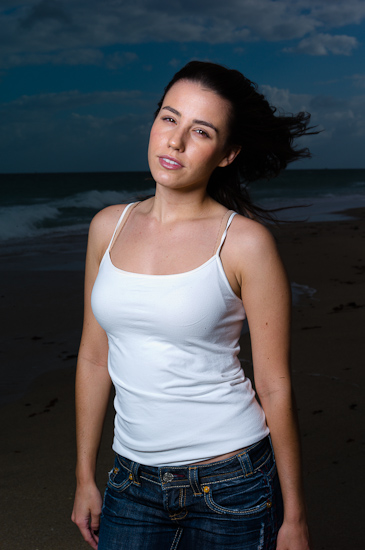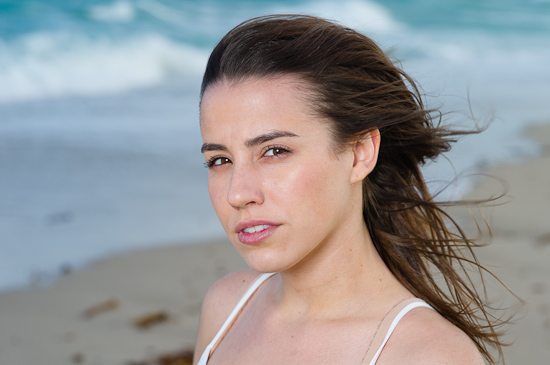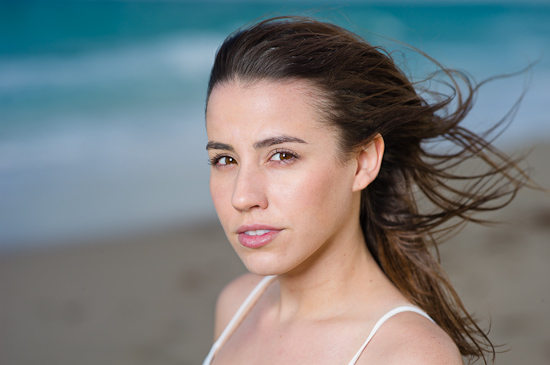-
Leica Store wrote a new post, Leica X2 Cameras Begin Shipping in the United States 12 years, 5 months ago
Today we received word that here at Dale Photo & Digital we will be receiving our first shipment of Leica X2 cameras in both black and silver chrome at the end of this week! This is exciting news, as the […]
-
Leica Store wrote a new post, Adobe Lightroom 4.1 Now Available 12 years, 6 months ago
Today, Adobe has released the latest version of Lightroom: Adobe Lightroom 4.1. Most notable for Leica users is the added support of two recently announced Leica products, the Leica M Monochrom and Leica […]
-
Leica Store wrote a new post, ISO Test: Leica M Monochrom vs. Leica M9 12 years, 6 months ago
While I had the Leica M Monochrom for testing in Germany, I figured I'd do a quick semi-controlled ISO test compared to my M9. I had certain impressions of relative ISO performance during my review of the M Monochrom, but nothing beats a side-by-side test. Before we get into the comparisons, let me first explain my methodology.
Testing methodology
These images were taken in the Wetzlarer Dom while I waited for the rain to subside. I shot them sequentially using the same lens: the Leica APO-Summicron 50mm ASPH using the same aperture (f/5.6) and same focus point. Between camera tests, I swapped the bottom plate while still mounted on the tripod so there would be as little movement as possible. Exposure was carried out using aperture priority. The light didn't change inside the church (overcast and rainy outside) and theoretically both cameras have the exact same meter. My intention was to shoot as quickly as possible and run through the entire ISO range so there would be no change while testing. Ultimately, the exposures did remain consistent.
Post processing approachBoth the M Monochrom and M9 images were processed in LR4 with all images of the same camera receiving identical settings. The M Monochrom images and the M9 were processed slightly differently due to necessity (one is natively B&W, the other is not). Here, my intention was to match the M9 as closely as possible to the M Monochrom result in terms of B&W conversion. Did they match exactly? No. I think the M Monochrom still gave superior B&W images even with tweaking the M9, but I suppose this was to be expected.
I did apply sharpening to the files on both cameras, with the same settings for both. These are the settings I would normally use on either the M9 or the M Monochrom. I feel it is best to compare fully processed images that have been made to look as close to finished files as possible. I know that other testers use “out-of-camera” images with “nothing applied”, but I never quite understood this approach. Post processing is part of the normal workflow and, in my opinion, shouldn't be separated from the camera for testing purposes. It's sort of like track testing two cars with their tires removed (so as to not give any traction advantage). I want to see what my actual results will be when I shoot these cameras in a real-world situation, and in the real world I would never not process the files to my taste.
That said, I turned off all noise reduction on both cameras, with the exception of the ISO 5000 and 10000 tests of the M Monochrom. Here, I provided images with no NR applied and with minimal NR as I might apply based on subject matter.
To compare the images, you can drag the center slider handle left and right, single-click in the area you want to split the image, or just use click the text controls underneath. In all images up to 2500 ISO, the M9 is on the left and the M Monochrom is on the right. For 5000 and 10000, only M Monchrom images are shown, with the noise reduced version on the right. All samples are at 100% size (1 pixel on screen = 1 pixel from camera). Enjoy!
ISO 320
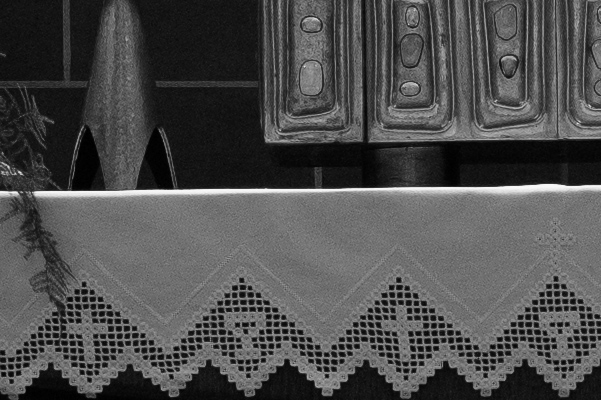
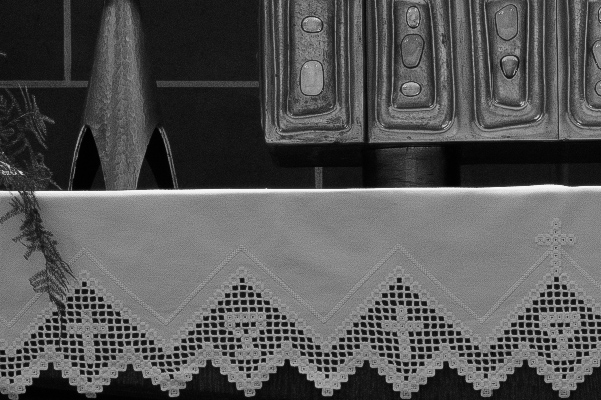
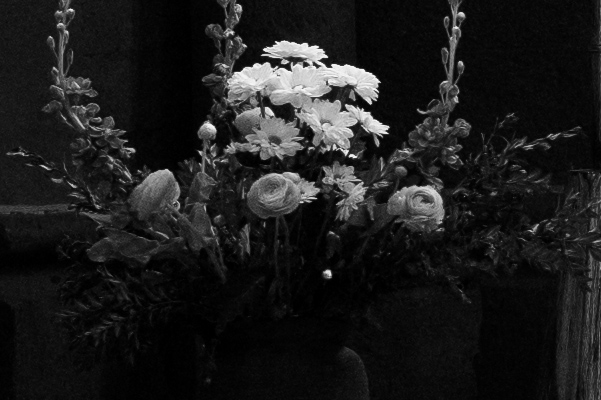
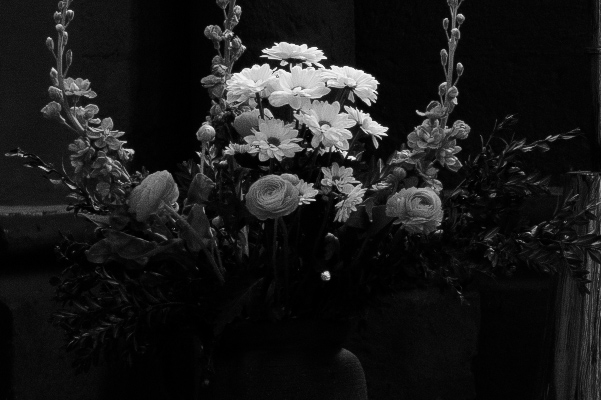
ISO 640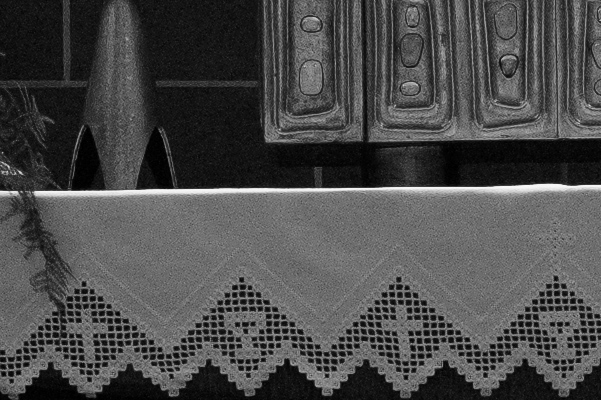
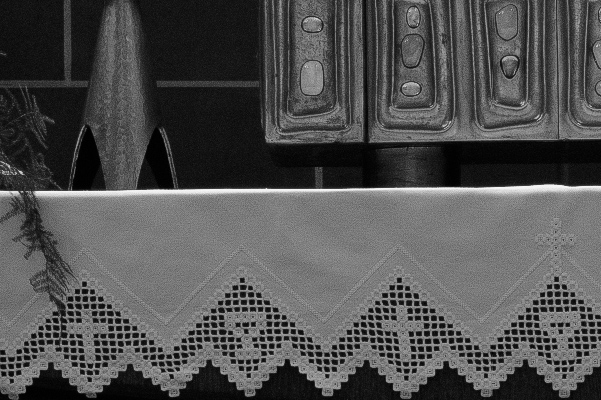
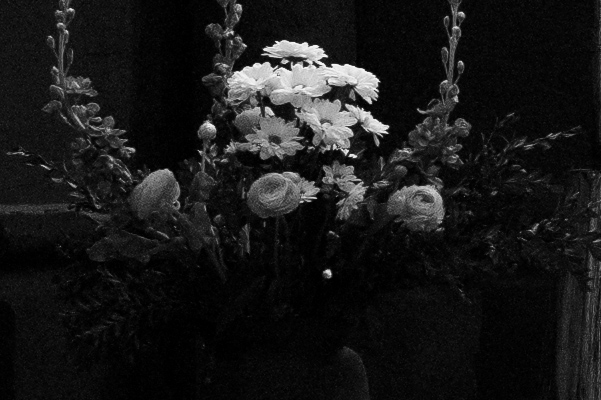
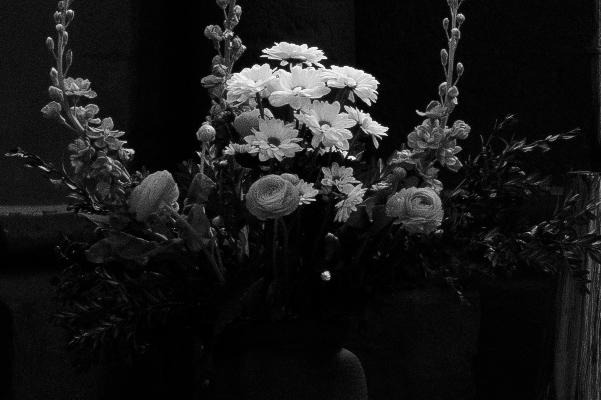
ISO 1250
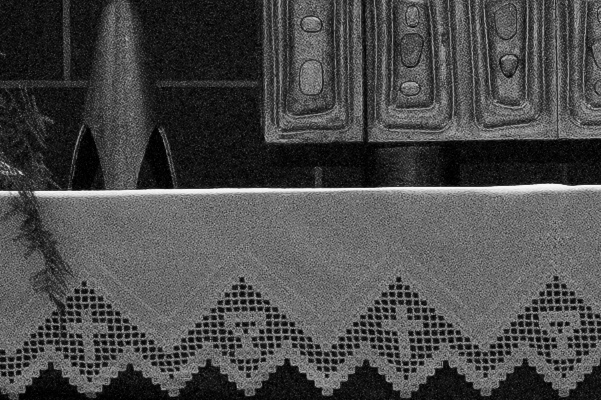
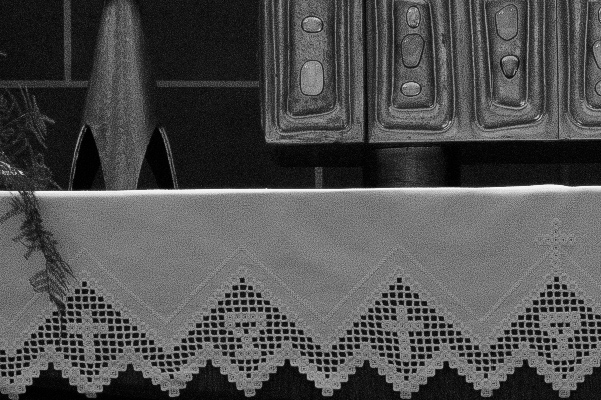
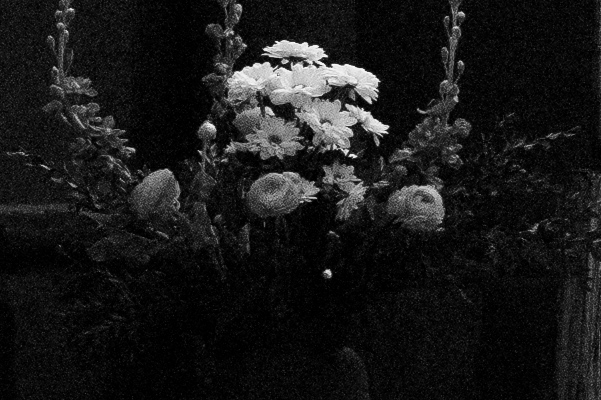
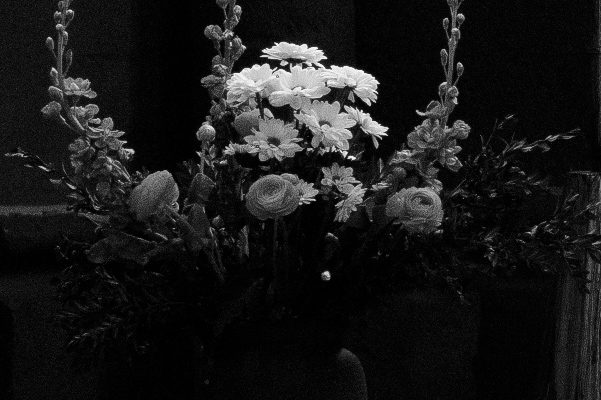
ISO 2500
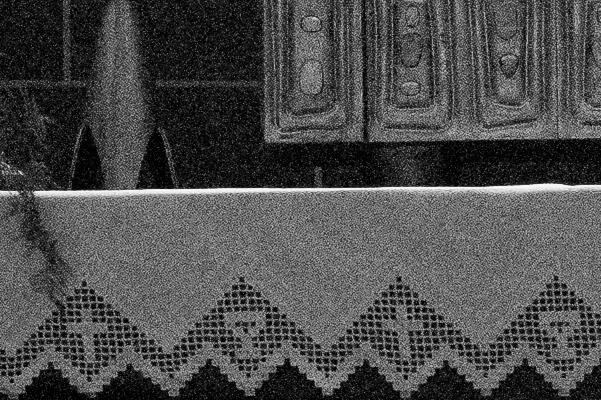
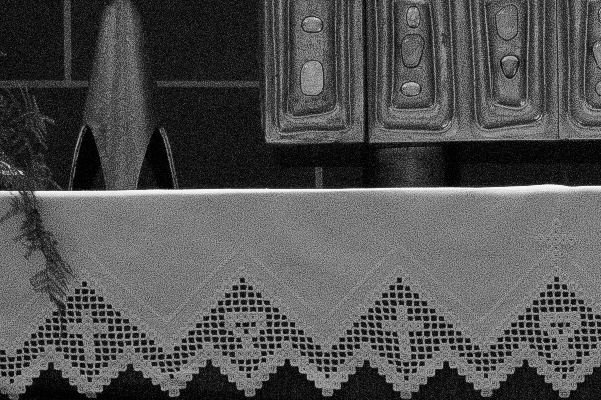
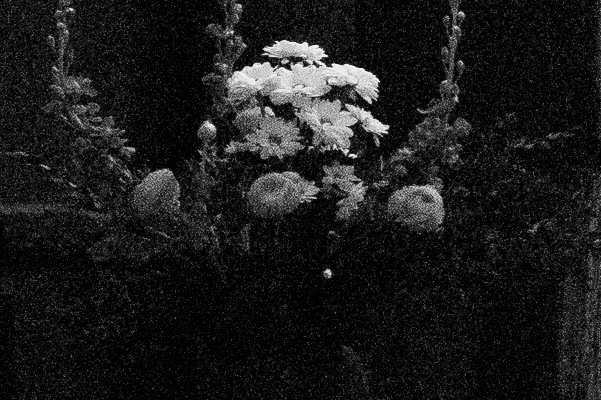
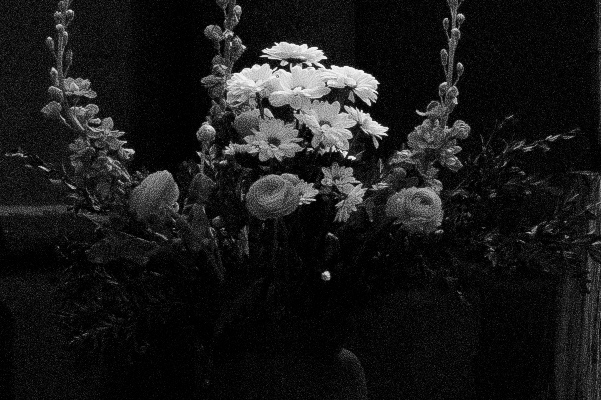
Because the M9 tops out at ISO 2500, the last two are M Monochrom only. As I mentioned in my full review, I think that noise reduction is only advisable after ISO 3200. I generally prefer to have more detail rather than totally smooth files.
ISO 5000
Here, I think noise reduction could be useful, but it's not necessary. On the left: no noise reduction. On the right: Luminance NR set to 20. For ISO 5000 and 6400, a little NR goes a long way.
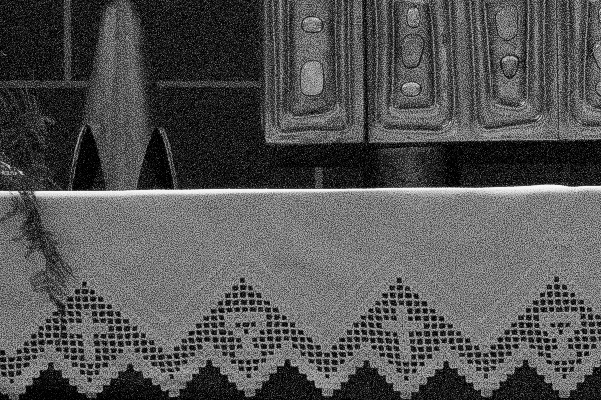
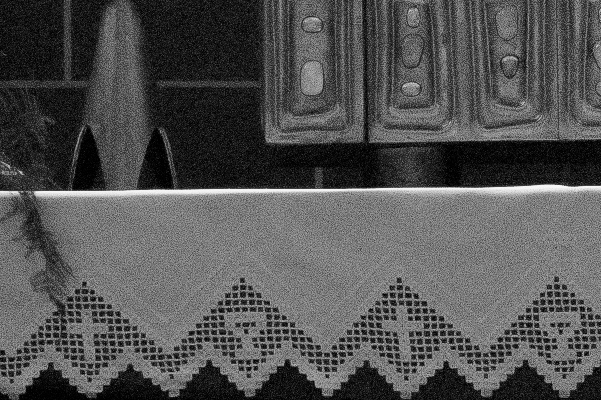
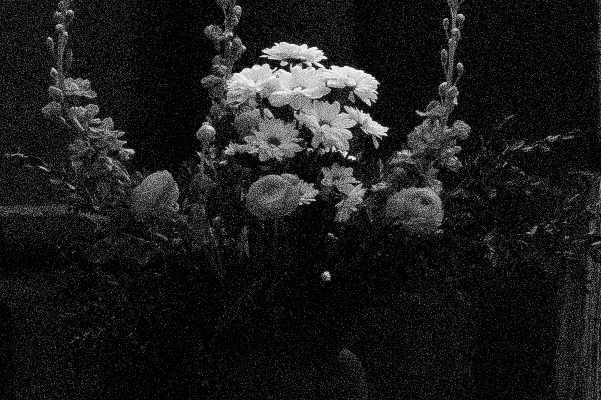
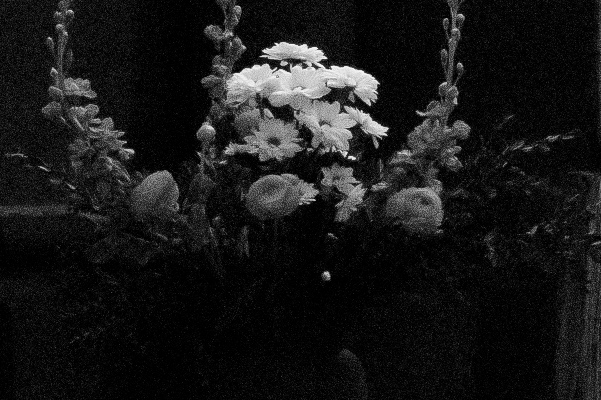
ISO 10000
At ISO 10000, NR is going to to be needed in order to avoid bright speckle noise. Here, I used a Luminance NR amount of 25. You can see how the blacks clean up very nicely just with a bit of NR. The tight, non-blurred noise pattern of the M Monochrom makes this easy.
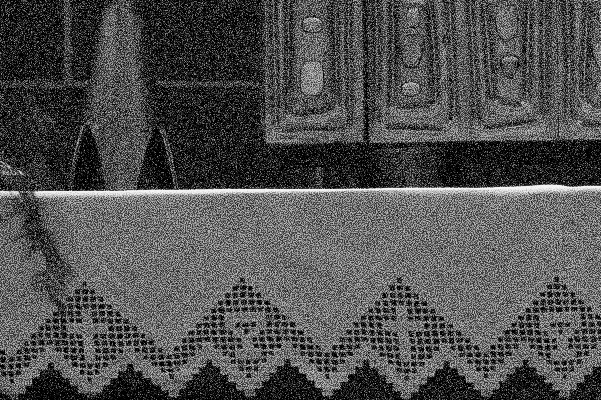
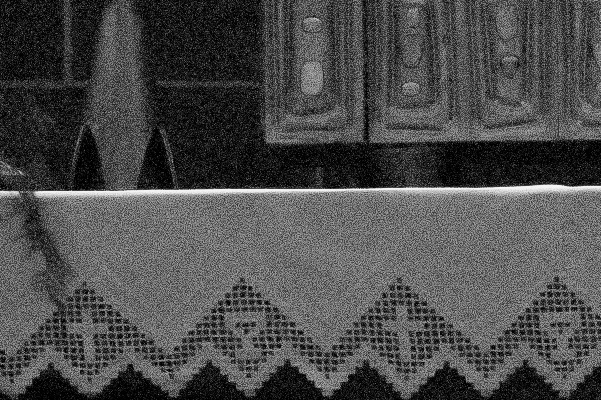
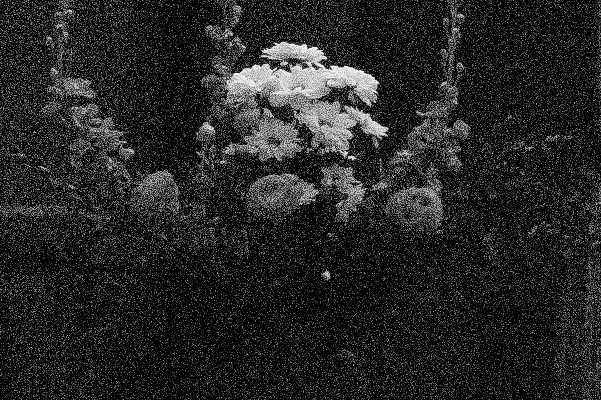
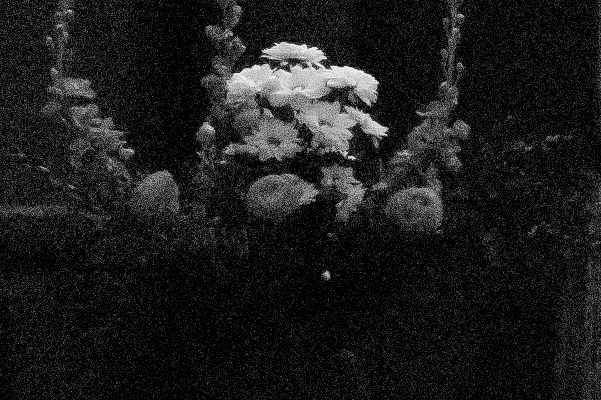
If you think the Leica M Monochrom or 50mm APO-Summicron could be for you, consider placing a pre-order through Dale Photo & Digital. Dale Photo is one of the largest and most knowledgeable Leica dealers in the USA. No deposit or prepayment is necessary. Call 1-800-327-1776 with any questions, or email me at [EMAIL=david@dalephotoanddigital.com]david@dalephotoanddigital.com[/EMAIL].
-
Leica Store wrote a new post, Leica M Monochrom Review 12 years, 6 months ago
When I heard the rumors about a B&W-only digital M camera body a few months ago, I was a bit skeptical. Who would want such a thing when it is so easy to convert M9 images to B&W in a matter of seconds with LR, […]
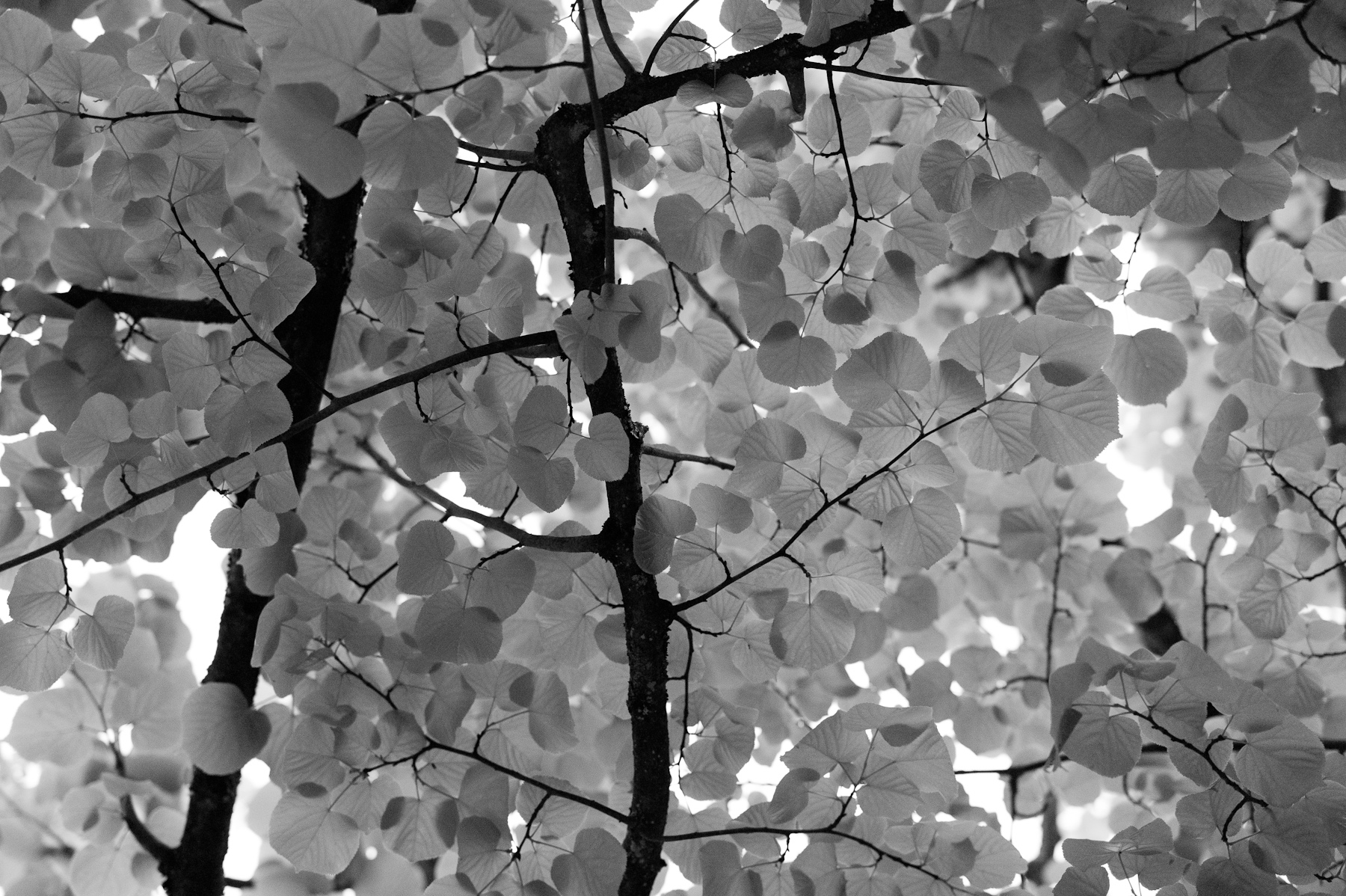
-
Leica Store wrote a new post, Leica S2 Firmware Update 1.0.3.3 Now Available 12 years, 6 months ago
-
Leica Store wrote a new post, Leica's May 10 Berlin Event – The Actual Event! 12 years, 6 months ago
Ah, how I love Leica launch events. I’ve been to many such events over the years, but Leica somehow manages to make each one fun, entertaining and unique. The May 10 Berlin event was no different.
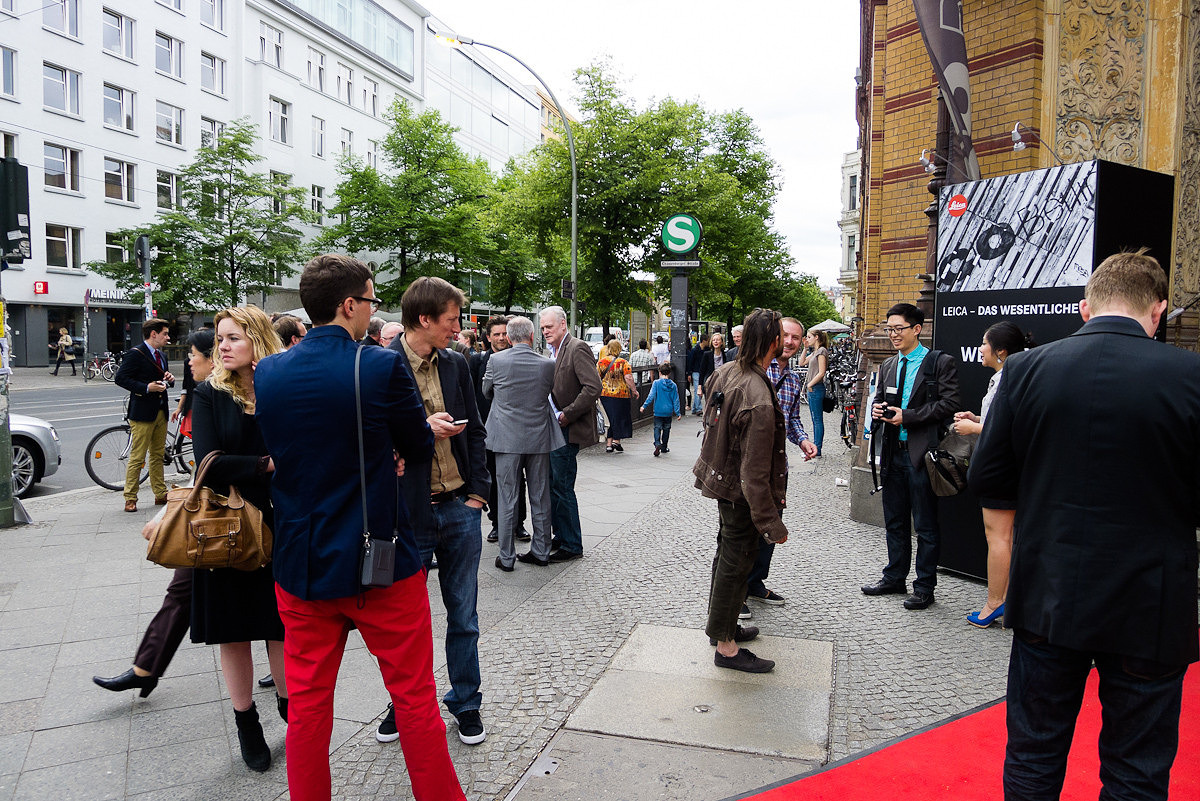

There was already a certain excitement in the air as I boarded the bus to take everyone from the Hotel Meliá to C/O Berlin where the Leica event was being held. The trip was surprisingly short, only a few minutes. We all filed out and, after all taking pictures of the front of the building (par for the course I suppose), headed inside. After being confirmed “on the list” I got a snazzy Leica USB bracelet with “Das Wesentliche” printed on it. This was my re-entry pass if I had to leave for any reason.
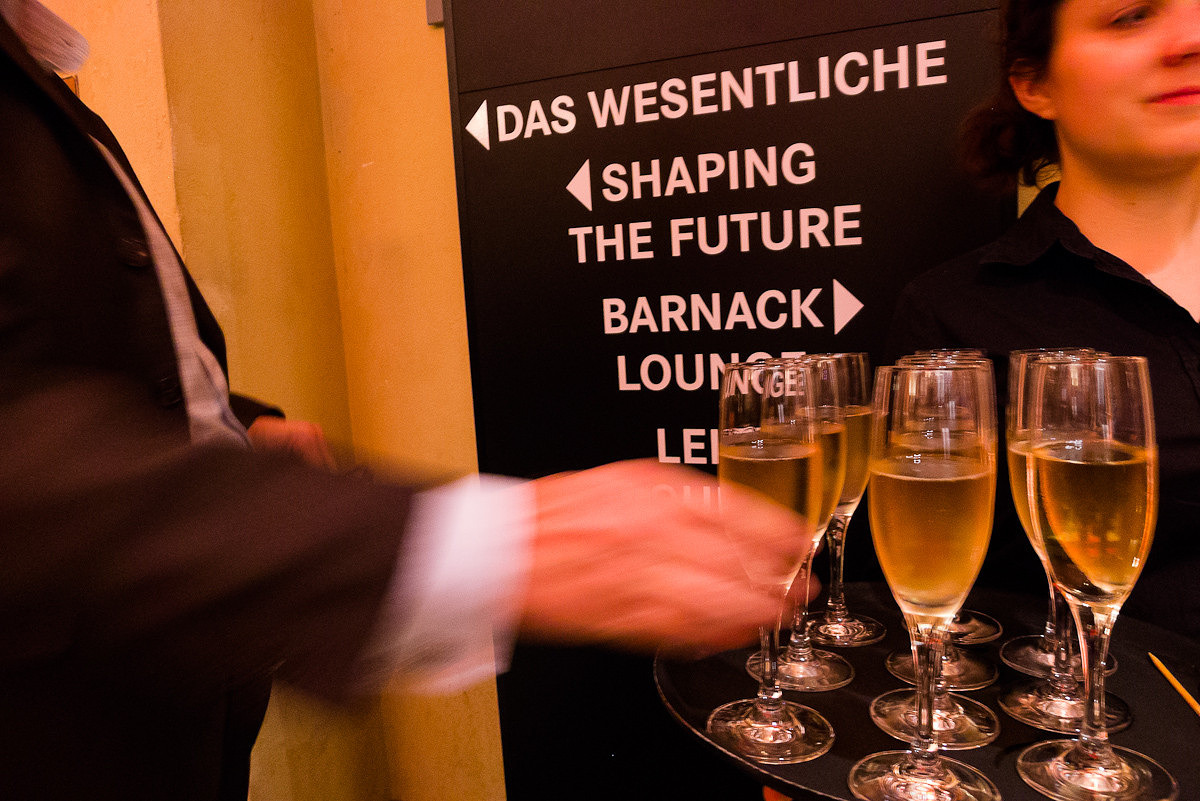
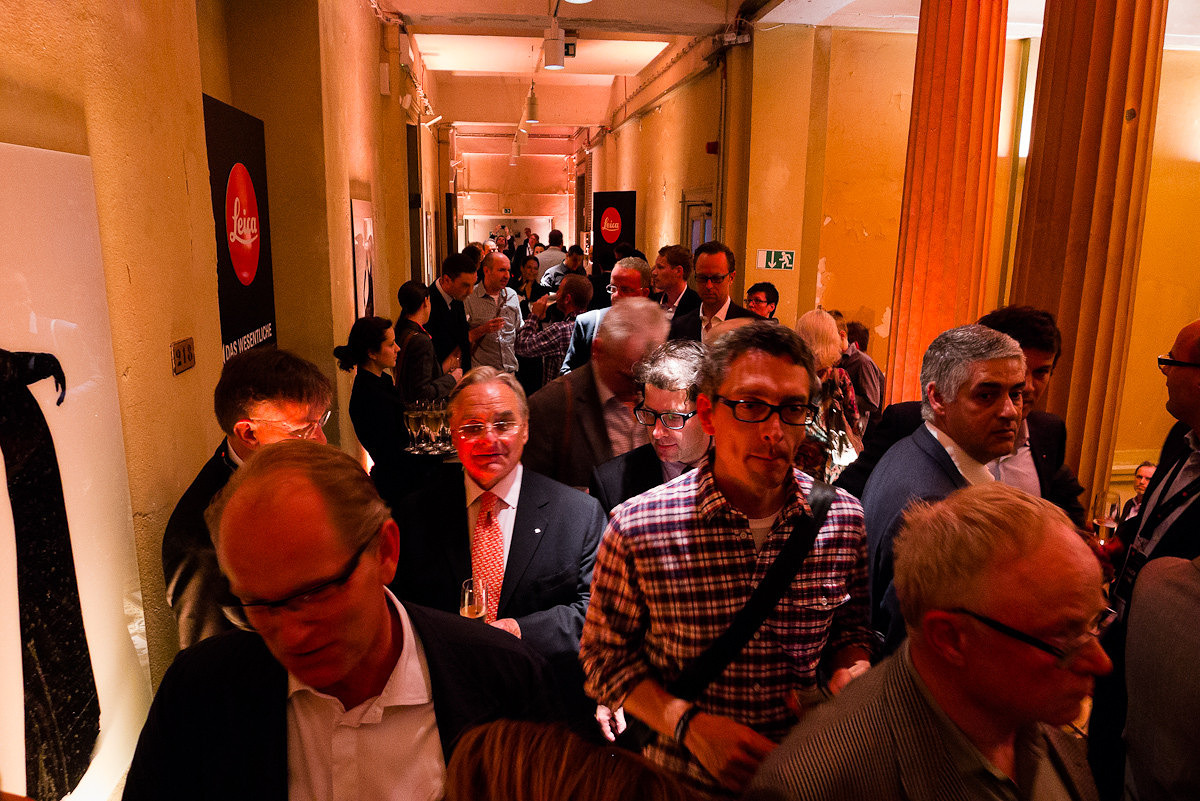
Attendees continued filing in as the champagne flowed freely, being passed around with trays of hors d'oeuvres. I immediately recognized a bunch of familiar faces as I ventured farther into the maze-like venue, both from Leica and other photo industry people I’ve come to know over the years. I ran into Dr. Kaufmann who was kind enough to pose for me. The composition was just too good to pass up – he was just standing right in front of a sign that read “Shaping the future” with an arrow pointing at him. Truly, Kaufmann is responsible for the great turnaround and success that Leica has been experiencing these past few years.
That being said, the sign was actually pointing to a side room where there was an architectural model of Leica’s new manufacturing facility in Vila nova de Famalicão, Portugal, which Kaufmann told me will be completed later this year. Hopefully this will make a positive impact on product availability, although I wouldn’t expect lens deliveries to increase dramatically until the new Wetzlar plant opens as almost all optical manufacture is in Germany.After some more mulling around and talking to friends old and new, I made my way to the Das Wesentliche presentation area. It was totally crammed full of people and was starting to get swelteringly hot, but the program hadn’t even started yet. I weaved through the crowd until I staked out a nice spot near the front. The fellow standing in front of me looked awfully familiar. Turns out it was Jonathan Slack from the UK, whom I have known for years on photo forums and who incidentally posted some lovely shots with the new M Monochrom on his website. We exchanged a few words then turned our attention to the stage.

The program got underway with a short performance from the 12 Cellists of the Berlin Philharmonic, who I got to see last night.
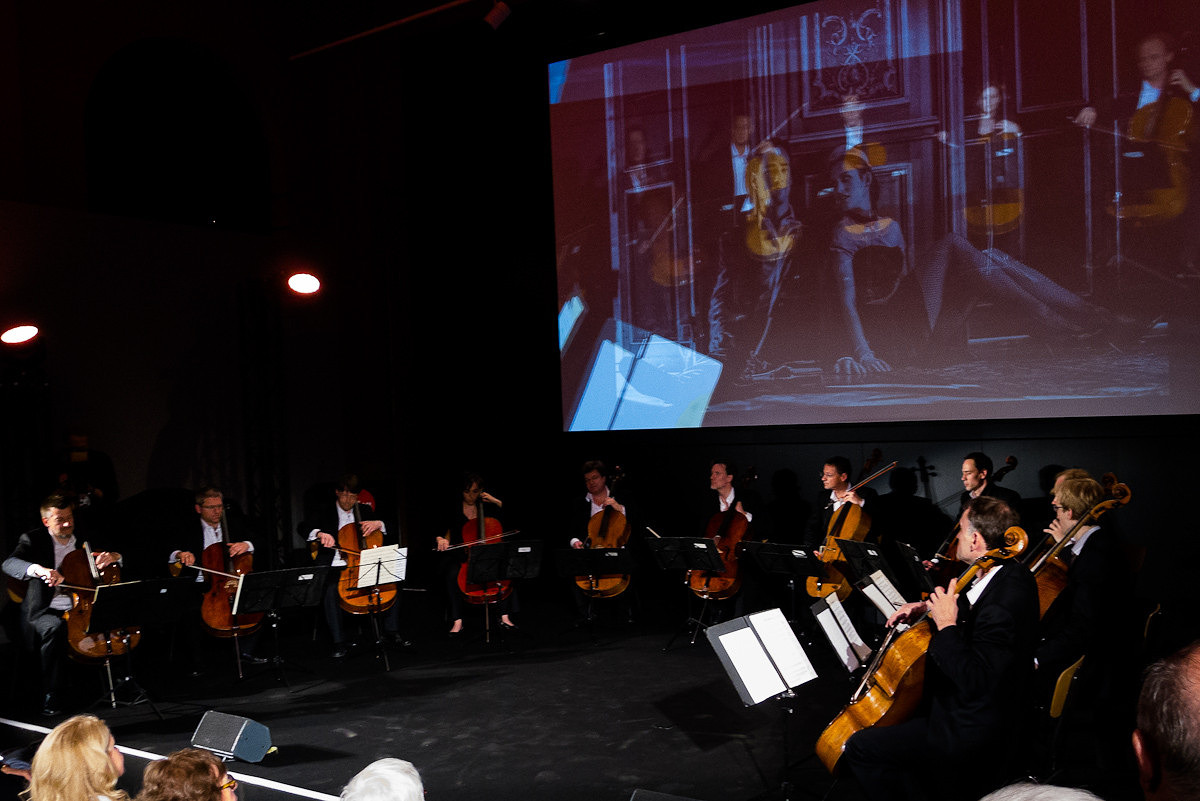
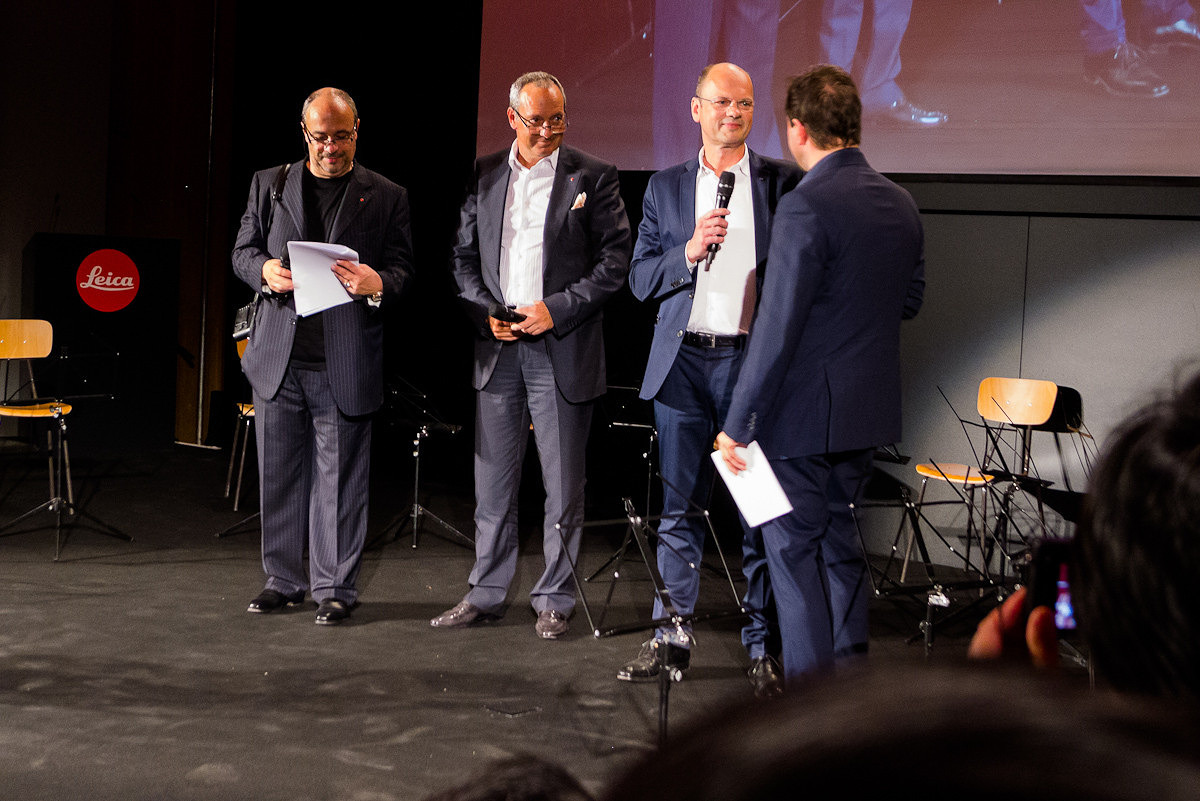
The Emcee then took the stage and brought up owner Dr. Kaufmann, CEO Alfred Schopf and the director of C/O Berlin. After a brief introduction to Das Wesentliche (the essentials) by Schopf and Kaufmann, a history of C/O Berlin (an old post office converted to a cultural arts house) by its director, Kaufmann announced the Leica Hall of Fame 2012 inductee: German photographer Barbara Klemm. She is now the first female to be given this honor. A short video was shown, then Ms. Klemm came on stage to receive a specially made M7 camera and say a few words.
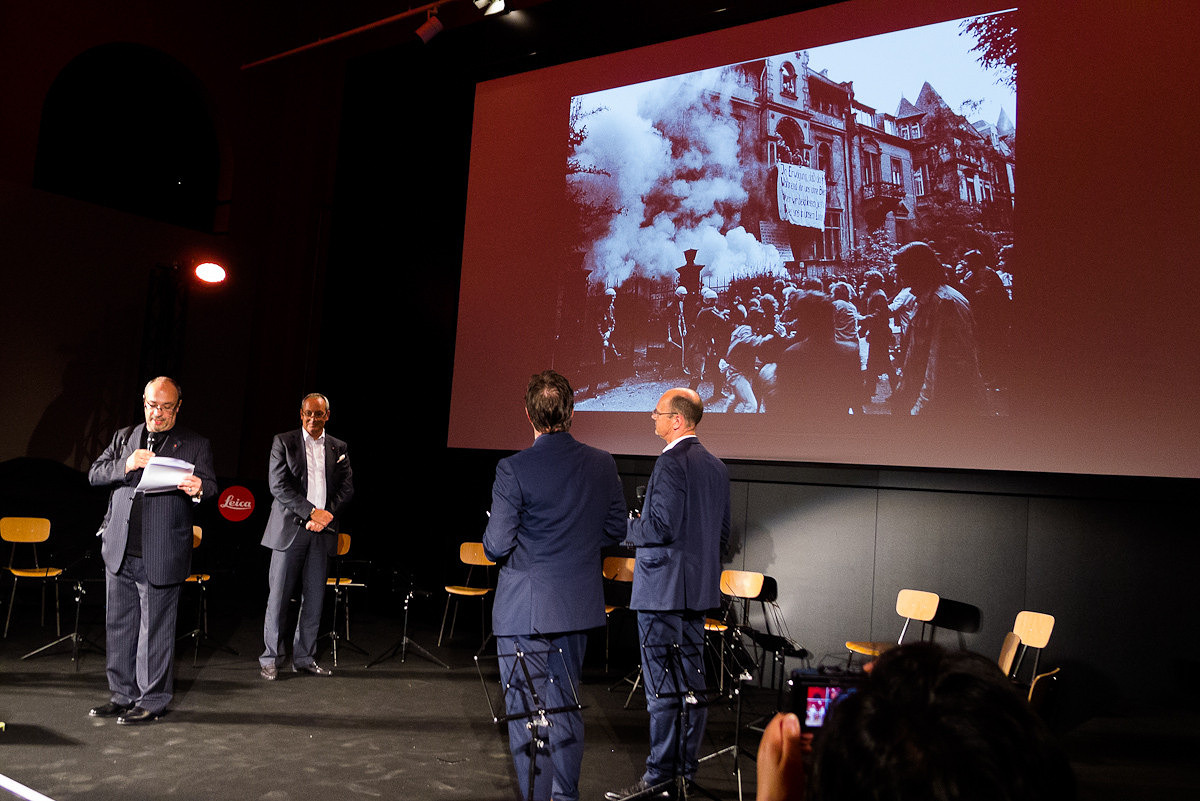
Then, after just this short series of presentations, there was an intermission so everyone could get some more food and drink. I again used the opportunity to chat with my peers and grab a drink. I spent most of the break hanging out with Andreas Jürgensen of the L-Camera-Forum, where we cooled off by an open window.
Kaufmann retook the stage and got right down to business announcing new products.
First up was the M Monochrom. No, there is no “e” on the end. Yes, it’s really a B&W M camera. Simultaneous to the M Monochrom, was the APO-Summicron 50mm f/2 ASPH unveiling – it was on the camera, after all. This lens is reputedly the best 50mm ever produced for the M system, with virtually flat MTF curves and unprecedented sharpness.
Magnum photographer Jacob Aue Sobol came up to the podium to present a slide show and offer his thoughts on using the new Monochrom camera shooting “From Moscow to Berlin”, a photo essay documenting passengers on this Russian train.
Moving on, Kaufmann was joined on stage by CEO of Hermès Group, Patrick Thomas. A video montage showing meticulous craftsmanship played on the projection screen behind them.
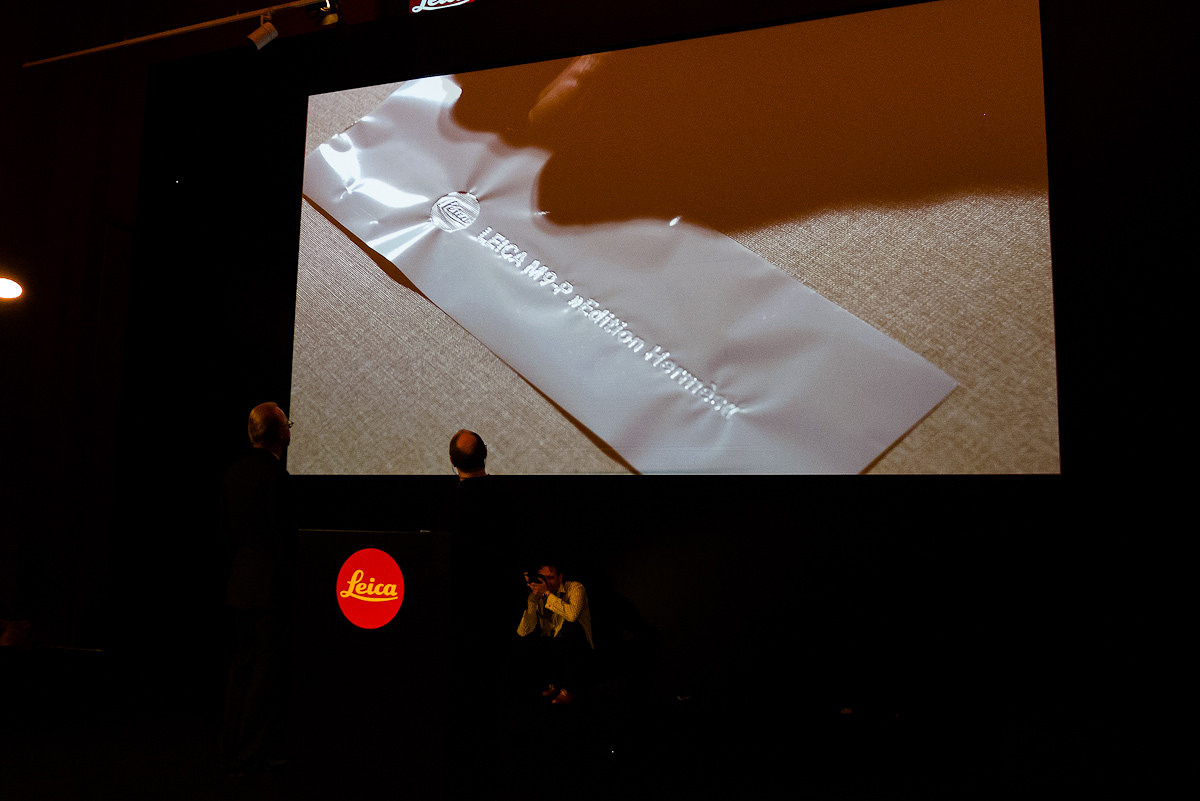
All of this was to announce the absolutely gorgeous Leica M9-P ‘Edition Hermès’, which will come in two sets. Set 1 includes a special silver anodized 50mm Summilux-M ASPH. This edition will be limited to 300 sets. Set 2 will come with three lenses, a 28mm Summicron-M ASPH, 50mm Noctilux-M ASPH and 90mm APO-Summicron-M, all in silver anodized finish. Only 100 of this set, dubbed the Série Limitée Jean-Louis Dumas, will be produced. Jean-Louis Dumas was the former president of Hermès and a good friend both to the current CEO Patrick Thomas as well as Leica.
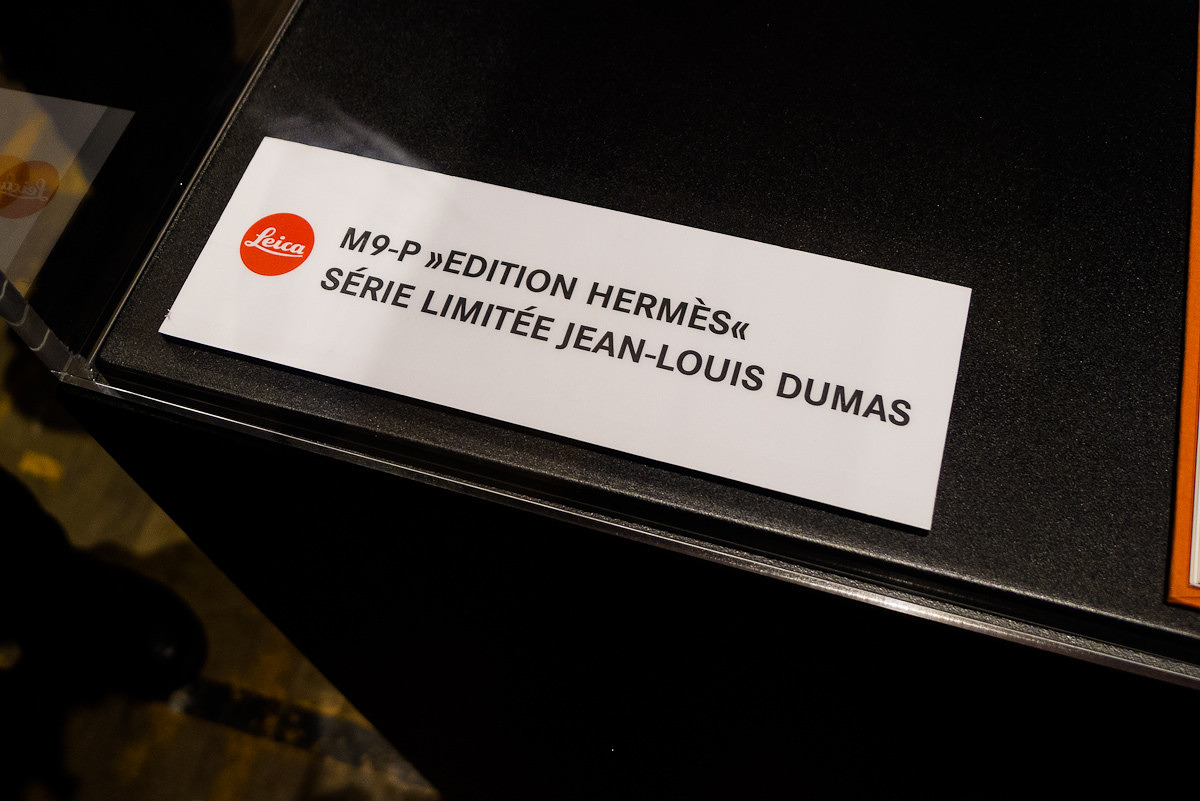
The next presentation was by none other than Seal, who offered greetings from sunny Los Angeles, CA with a shiny new silver chrome X2 around his neck. Kaufmann then expanded on Seal’s intro, offering a few technical details.
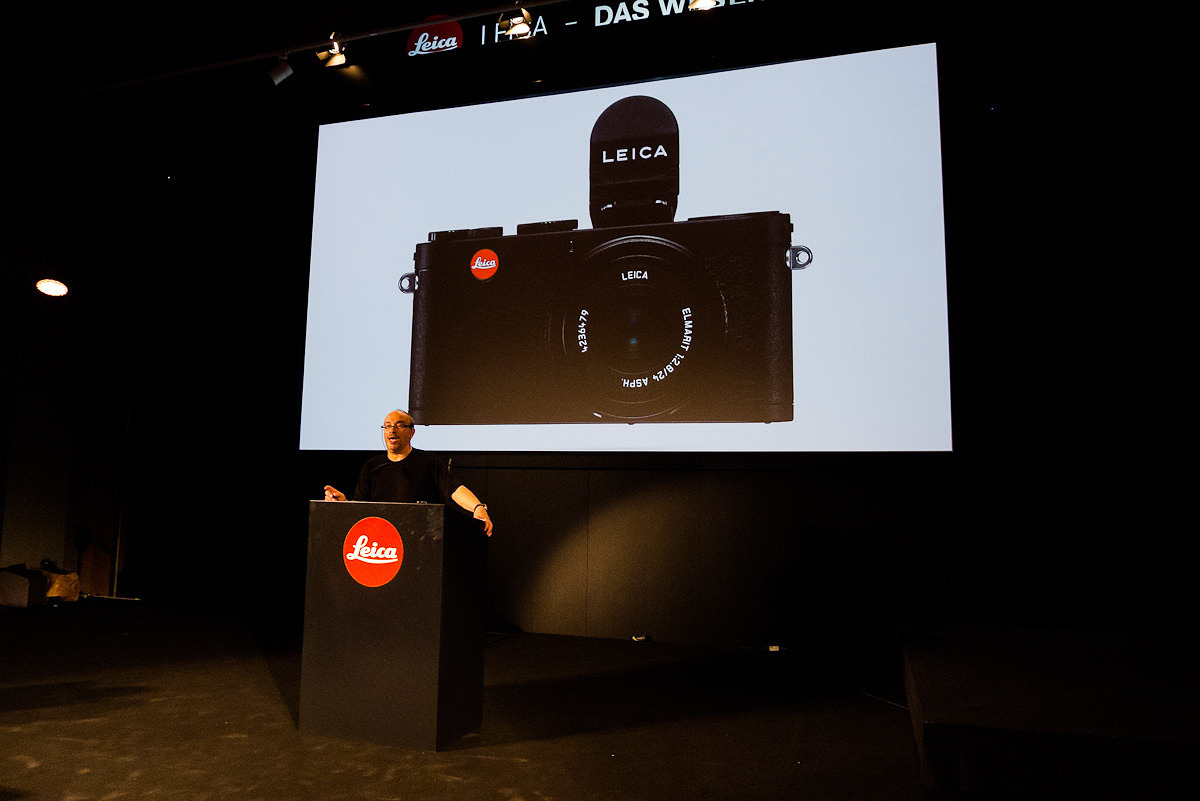
Without pause, Kaufmann moved on to an update on both construction projects. He showed images from the new Portugal facility and reiterated that it should be open in October of this year and that building permits have been secured for the new headquarters at Leitzpark in Wetzlar.The next product announcement came as quite a surprise to me. Leica has developed an adapter for the S2 that enables it to use Hasselblad HC and HCD lenses. What is really amazing is that Leica has been able to maintain full control of the lens, meaning auto-diaphragm aperture control, leaf shutter control and auto-focus. Wow. This could really be a game changer for the S system. Almost all rental studios have HC lenses. With just a body, they could have almost all the advantages of the S2 without the investment in a full set of S lenses. Better battery life, brighter viewfinder, more stable platform, more ergonomic handling and a 1/4000th of a second focal plane shutter make the S2 a pretty attractive deal. On the other side, it opens up a range of focal lengths to existing S2 owners like a 300mm long telephoto or a 50mm moderate wide angle, both which are currently lacking in the S lens lineup.
Kaufmann then briefly touched on the new V-Lux 40, the replacement for the V-Lux 30 compact digital camera. With a 20x zoom, full HD recording and a new low noise CMOS chip, the V-Lux 40 looks like a great little camera. And, yes, I did play around with one for a few minutes.
At the back of the room, several glass display cases seem to appear out of nowhere. New products were protected against drool, but not against photos. You'd think the paparazzi had sniffed out some hot celeb, not a few cameras. It appears others were excited as I was.
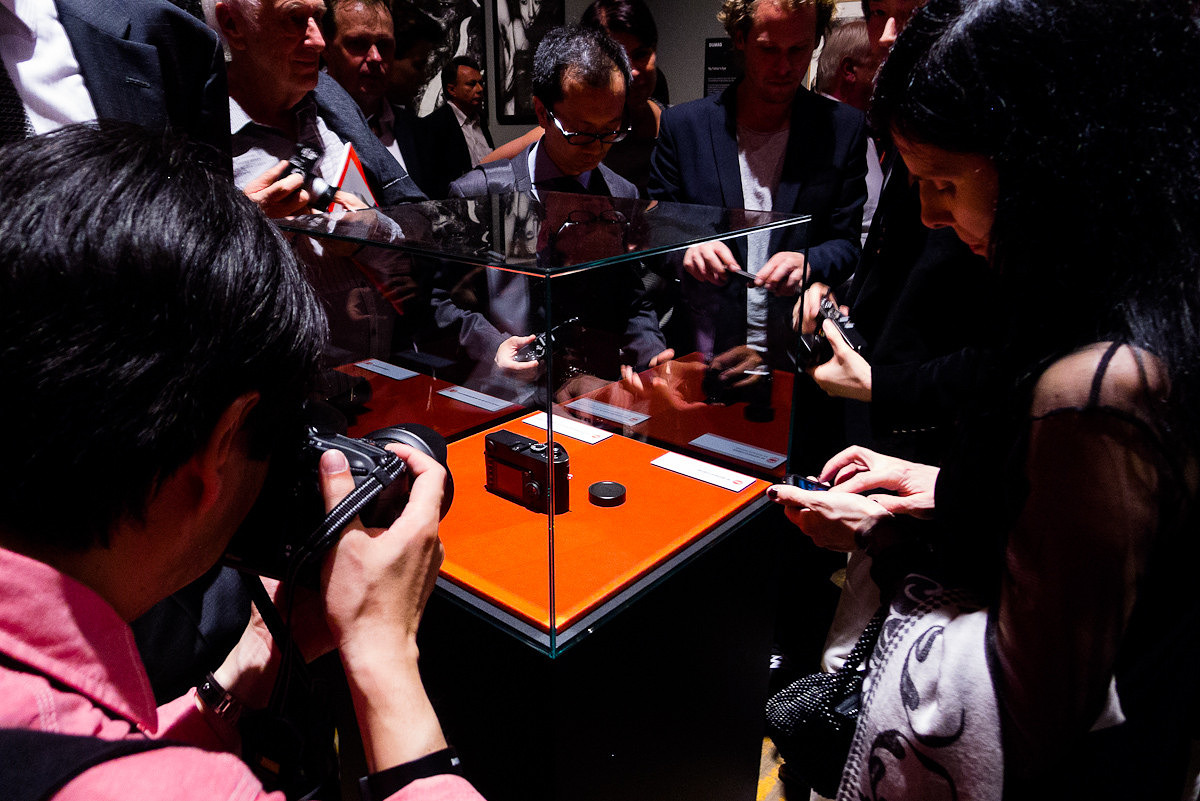
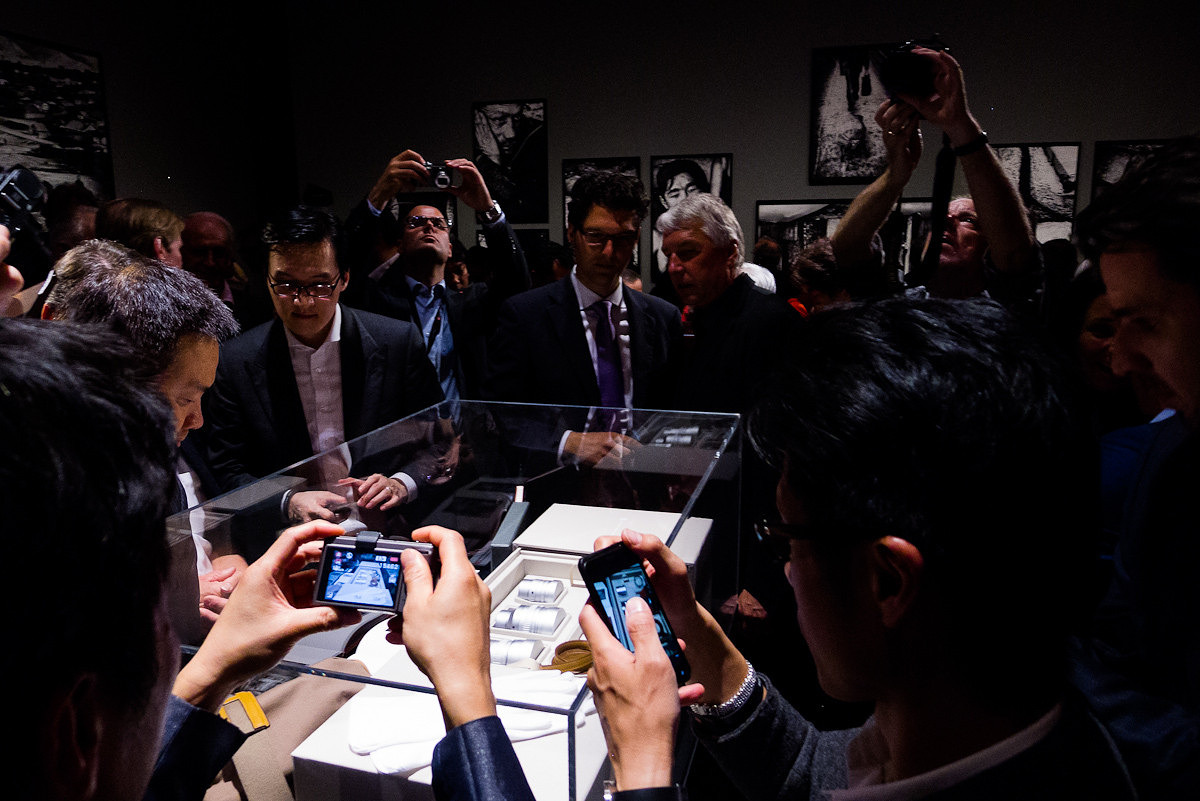
With no more announcements, we were dismissed for yet more food and drink, and to see all the products first hand in the Touch & Feel gallery. This is, of course, my favorite part. Each product family was set upon tall tables.
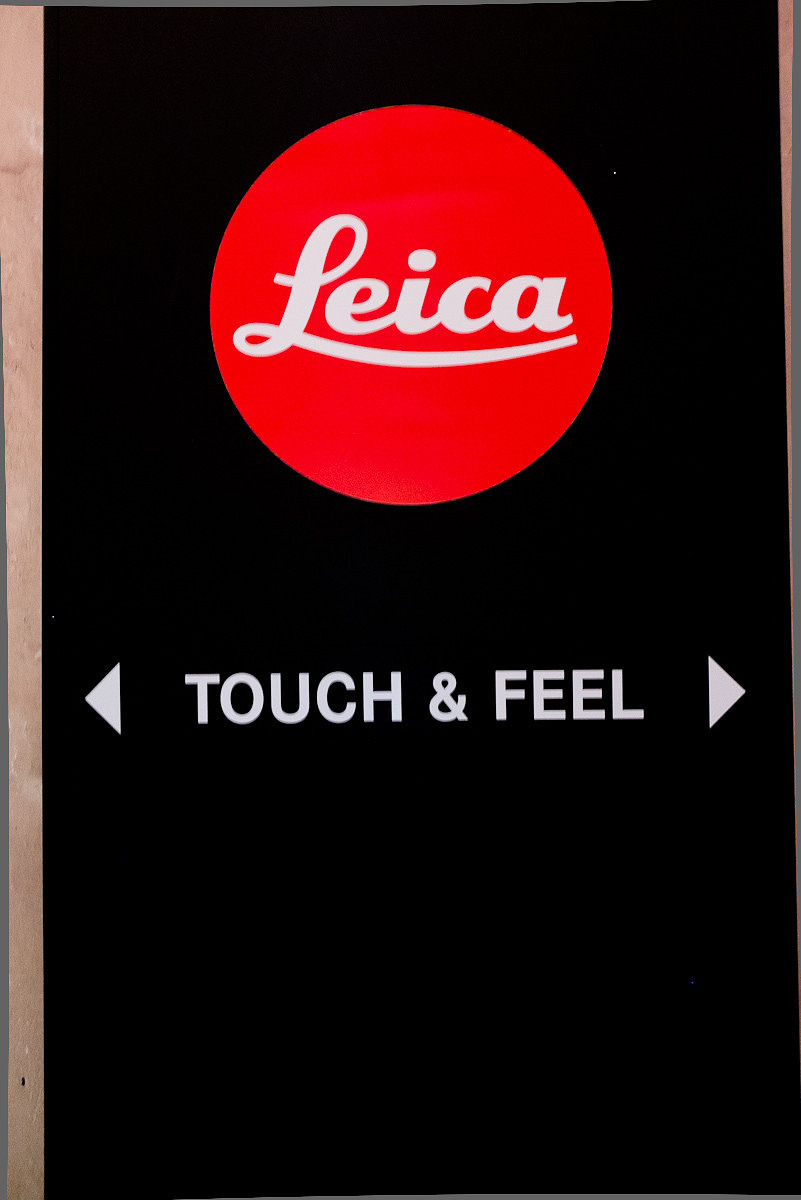
When I approached the X2 table, I was greeted with a smile from product manager Maike Harberts. For those that don’t know Maike, she and I first met at Photokina 2006 when she was product manager for the R system. We had a very strange chat about larger than full-frame sensors in the next digital R camera. It became clear two years later that she had been talking about the S2, of which she was one of the primary architects. After making her mark on the S2 and handing the project over to the very capable Stephan Schulz, she moved on to reinvigorate the X system.
Maike showed me the X2 with great enthusiasm. She is a big fan of the new silver chrome finish, and I have to agree. It looks great. The other thing I immediately noticed, and she confirmed, is that the X2 is heavier (by about 60g to be exact). It just feels more solid, more put together. The dials are stiffer (in a good way) and the AF is much quicker. Maike also showed me the new EVF-2, which now has 1.4 million pixel resolution. It is very, very good quality with a robust and large circular eye-cup. Other changes include a more refined leatherette, which is different on the black and silver models, a flash that pops up and forward to eliminate shadows from the lens, a new and very classic ever-ready case and improved processing and image display. Of course, one of the biggest changes is the new 16MP CMOS under the hood. Besides packing in a few more pixels, the high ISO performance should be pretty solid. Maike was nice enough to lend me an X2 for the rest of my time here in Berlin and I’ll post more in-depth thoughts and images when I get back home.
Jesko von Oeynhausen, the product manager for the M system, and I met just this past October at Photo Plus in NYC. He’s a very cool guy and gave me the full overview of the new M gear. The M Monochrom is pure simplicity (das wesentliche, indeed). No markings, no red dot, no engraving. There is a small black-on-black engraving of “Monochrom” on the edge of the hot shoe and the usual “Leica Camera Made in Germany” printed small on the back above the LCD. That’s it. The finish (the only one available) is a nice matte black chrome, similar to that of the M8, but a little nicer. Sapphire glass is also a nice touch.Imaging performance is astounding. Jesko explained to me that due to color filter arrays (CFAs), sensor pixel noise gets blurred, resulting in smeary noise patterns on color digital cameras. The MM has no CFA, so any pixel noise is contained to a per-pixel manifestation, resulting in very small, very crisp noise yielding an extremely detailed, pleasing result. And with 14-bit capture, the MM is able to record more than 16,ooo shade of gray. Not too shabby.
The MM is also the first 35mm digital cameras to provide an actual RAW histogram. Normally, with color cameras, there is more highlight headroom. In a three channel capture, only one or two would be blown out, but the third contains some highlight information. With a B&W capture, there is only one channel, which makes it critical that highlights be protected. I will find this out when I shoot the MM for myself, but the best practice seems to be to slightly underexpose the images (shoot to the left). With such low and pleasing noise, even at pretty high ISO settings (goes all the way to ISO 10,000), I’m guessing the DNG can take a little post processing love. I’m really looking forward to shooting with M Monochrom.
I also got to play with the new 50 APO Cron ASPH, which is certainly nice to hold. I'm sure it's even nicer for taking pictures. The shade design is pretty neat. It twists out into position and feels great.
And, I must say, the Hermès edition camera is just so sexy. The fit and finish is just amazing. It is less camera and more Ferrari… or perhaps Audi would be more politically correct. Walter Di Silva again contributed to this beautiful, smooth design. The leather is as supple as it gets and I caressed the top plate so much that others around the table were probably expecting a Genie to emerge from the lens mount. Even the 50 Lux gets special treatment with a black positioning dot and textured focusing ring.
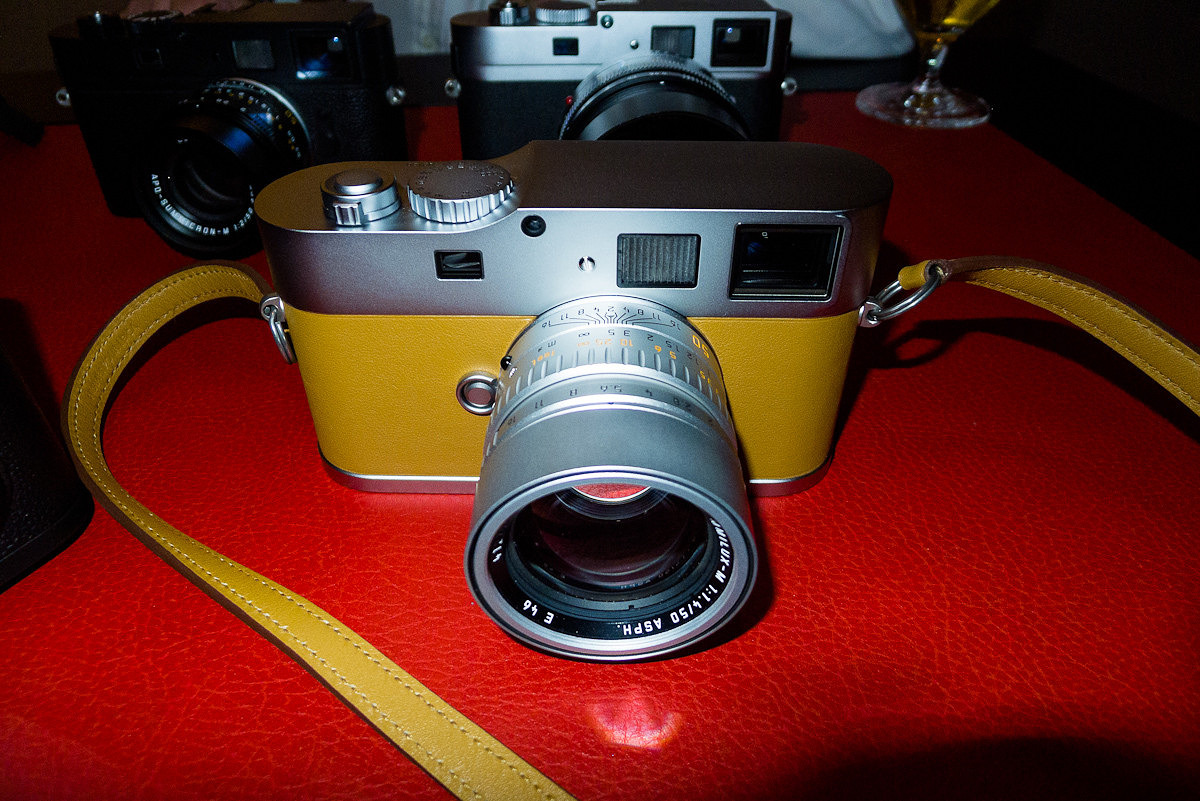
Last up on the Touch & Feel tour was the S System. There was a full range of CS lenses along with a few Hasselblad H lenses comingled in for good measure. In addition to the S to H adapter, Leica also updated the spec on the CS lenses from 1/500th to 1/1000th of a second. I popped on an SF58 flash, cranked the shutter speed up to 1/1000 and fired with the camera with the selector set to CS. The sync was perfect. Admittedly, Leica keeps pushing back the release of the CS lenses, but upping the spec might actually be worth it. I posted a test a few months back with pre-production CS lenses and I was extremely impressed. Upping the sync speed one full stop makes me rationalize that they’ll be worth the extra wait. New official release date: October 2012. Oh, and the shutters in the lenses are rated for 100,000 exposures.
I then moved the flash to another body with a Hasselblad 50mm mounted via the new adapter and fired off a shot at 1/750th. Again perfect. AF and shutter performance were as if the lenses were made for the S2. Leica did a commendable job with the adapter solution. No stop-down metering, no manual focus, no compromise. As I already said, I do think the adapter is going to have a very positive effect for the S system. It provides both an easy migration path with minimal investment and the ability to flesh out an existing S lens lineup. Leica will be releasing a set of LR lens profiles for the H lenses. Without corrections, lenses like the 28 HCD and 35-90 HCD would be unusable as Hasselblad specifically designed these lenses with digital correction in mind – a bit of a different approach than what Leica does.
There was no 30-90mm or 24mm shown for the S2. I suppose we’ll just have to wait a little longer on those.
After all the touching and feeling was over, everyone headed outside for some well-deserved drinks and food. The party was still going strong when I ducked out at almost 2am.

Later today, I have one-on-one interviews with Jesko von Oeynhausen and Stephan Schulz. If you have any questions you’d like me to ask, please let me know ASAP.Look for more coverage later tonight.
-
Leica Store wrote a new post, Leica May 10 Announcements: A Summary 12 years, 6 months ago
-
Leica Store wrote a new post, L-Camera-Forum's Leica M Monochrom Video Preview 12 years, 6 months ago
For a preview of the Leica M Monochrom camera check out this new video from L-Camera-Forum:
This looks like an exciting new camera and I can't wait to test it out!
-
Leica Store wrote a new post, Leica Announces Leica S2 Firmware Update 1.0.3.3 12 years, 6 months ago
Today, as part of their May 10 event, Leica has announced new firmware for the Leica S2, version 1.0.3.3 to add compatibility with the new Leica S-Adapter-H and improve flash synchronization. The press […]
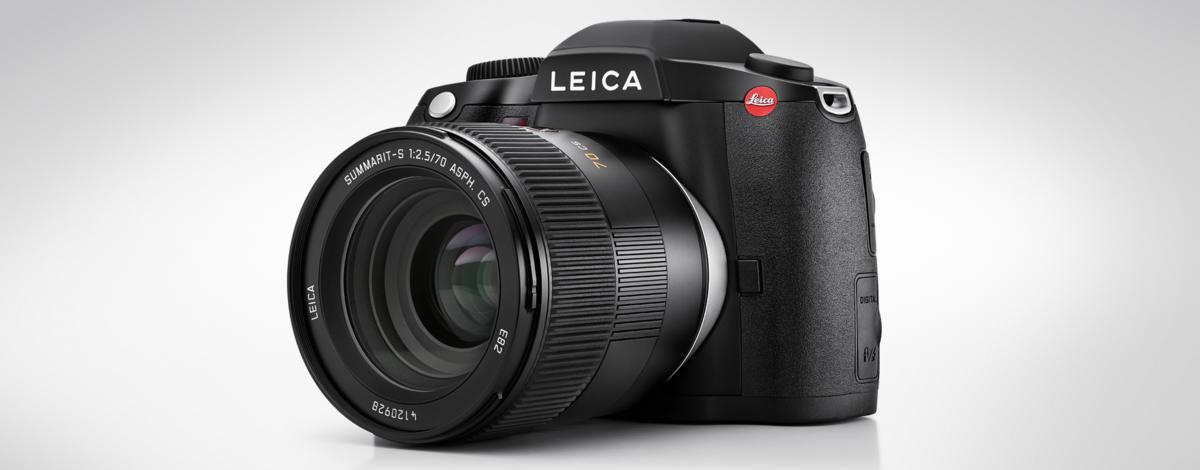
-
Leica Store wrote a new post, Leica Announces the Leica APO-Summicron-M 50mm F/2 ASPH 12 years, 6 months ago
Today, as part of their May 10 event, Leica has announced the highly anticipated Leica APO-Summicron-M 50mm F/2 ASPH, what looks to be their finest performing lens to date:
LEICA APO-SUMMICRON-M 50 MM […]
-
Leica Store wrote a new post, Leica Announces the Leica X2 Digital Camera 12 years, 6 months ago
-
Leica Store wrote a new post, Leica Announces the Leica M Monochrom 12 years, 6 months ago
Today, as part of their May 10 event, Leica has announced their new Leica M Monochrom, and what a camera it is! Press release as follows:
LEICA M MONOCHROM: THE FUTURE OF BLACK-AND-WHITE PHOTOGRAPHY
<br […] -
Leica Store wrote a new post, Leica Announces the Leica S-Adapter-H 12 years, 6 months ago
Today, as part of their May 10 event, Leica has announced the Leica S-Adapter H, which allows Leica S2 users to mount Hasselblad H lenses to their cameras. The press release:
LEICA CAMERA AG EXPANDS THE […]
-
Leica Store wrote a new post, Leica S-System Expanded By Five S-Lenses with Central Shutter: Available from October 2012 12 years, 6 months ago
Today at their May 10 event Leica has offered an update to the status of the CS (Central Shutter) lenses for the Leica S2, with the biggest news being that the flash sync speed will now be 1/1000th of a […]
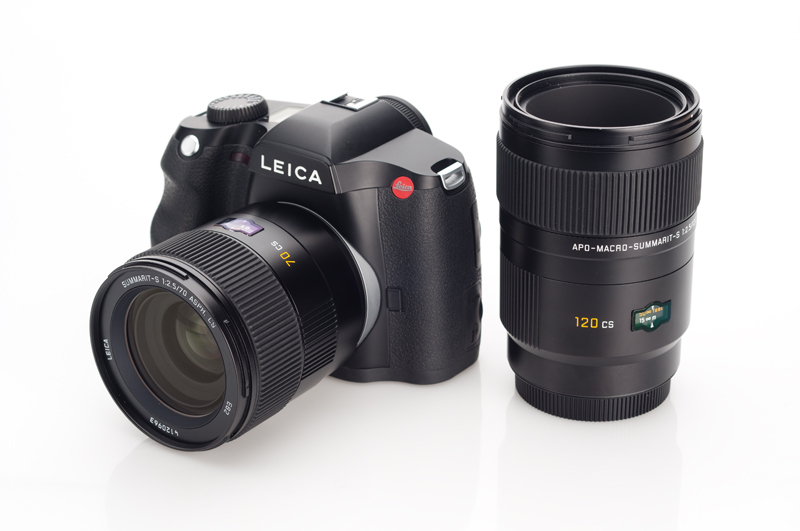
-
Leica Store wrote a new post, Leica May 10th Event: Arrival in Berlin 12 years, 6 months ago
If you’ve been following me on Twitter, you probably know that I arrived in Berlin earlier today. After getting situated in my room and chatting up a good number of familiar Leica faces in the lobby of the Hotel Meliá, I got to briefly explore a tiny part of the city on the other side of the Spree River while grabbing a very late lunch/slightly early dinner. In untypical fashion (for me at least), I went on a 2 mile walk without any major camera gear. All I had was my D-Lux 5 and I wasn’t really looking to take pictures. Truth be told, I was hungry and still a bit tired after 18 hours of travel. I also needed to get back to the hotel to freshen up and get ready for a night out.

Sorry, I thought this was funnySince I was arriving a day early, Dr. Andreas Kaufmann was kind enough to extend an invitation for me to join him, along with members of the supervisory board and other top people from Leica Camera, for a special performance of the 12 Cellists of the Berlin Philharmonic. These fourteen individuals (somebody’s not so good at math), are among the best cellists in the world. An all-cello ensemble made for a unique, beautiful, and powerful, yet gentle sound. I thoroughly enjoyed the experience and appreciated the opportunity to spend time with some of my friends at Leica.Fast forward a few beers with even more Leica folks in the hotel bar and I am back in my room, getting ready for tomorrow’s big event.
Back in March, some save the date emails for a mysterious Leica event in Berlin got posted online; a few major rumors and a flood of predictions have been circulating ever since. In less than 24 hours, we’ll know for sure and I’m super excited for the official announcements. Those that know me and have followed my reporting in the past, know that I am a major gear-head. I absolutely love product launches like this. Yes, the logical part of my brain has a pretty good idea what is coming based on past conversations I’ve had with product managers and executives, along with historical release patterns. But, the little kid in me can’t wait for the big event to start so I can soak in all the new product goodness as it happens.
Join me on Twitter for live updates and pictures from the event, then make sure to check back here on Red Dot Forum for detailed analysis after the dust settles.
-
Leica Store wrote a new post, Video: The Thumbs Up – Our Favorite Leica M Accessory 12 years, 6 months ago
David and I are frequently asked what our favorite accessory is for Leica M digital cameras and our answer is always the Thumbs Up. Manufactured by Match Technical Services, the Thumbs Up is a small grip that […]
-
Leica Store wrote a new post, Leica Breaks Ground on New Headquarters and Factory in Wetzlar 12 years, 7 months ago
As we reported previously, Leica is progressing on their new 55 million Euro, 290,000 sq. ft. factory at Leitz-Park in Wetzlar, Germany. They received plan approval back in November and had estimated a […]
-
Leica Store wrote a new post, Stay Tuned for Full Coverage from Leica's May 10th Berlin Event 12 years, 7 months ago
In less than three weeks, I will be heading to Berlin for Leica's big May 10th event. Rumors abound about what might be announced and Leica has been extremely tight-lipped about any upcoming products. After weeks of rampant speculation, we don't have to wait too much longer for the curtain to be lifted.
I will be live tweeting from the event (Follow me on twitter @RedDotForum) and posting detailed analysis right here on Red Dot Forum. My hope is that I will get to have some hands-on time with whatever new products are shown and get quality one-on-one time with some of the product managers. If there are any questions you'd like me to ask, please post comments here on Red Dot Forum and I'll do my best to get some detailed answers.
-
Leica Store wrote a new post, Testing the CS lenses on the Leica S2 12 years, 9 months ago
When the S2 launched, Leica announced that the camera would feature a dual shutter system. The rear of the S2 has a power switch with three positions: Off, FPS and CS. FPS stands for focal plane shutter, which is standard in just about every SLR-type camera out there (except the Hasselblad H system). CS stands for central shutter, also commonly referred to as a leaf shutter or a lens shutter. Leica is getting close to launching the CS lenses and I had an opportunity to try them out. Before getting into the tests, let’s take a look at what a dual shutter system offers.
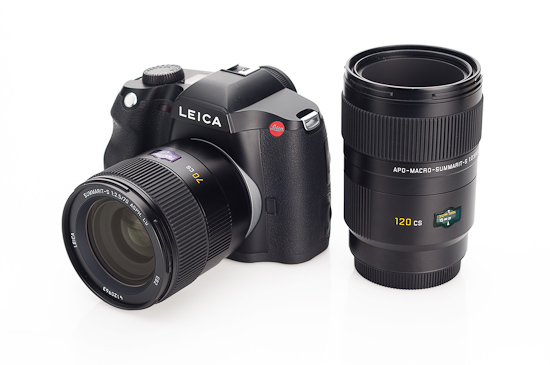
Advantages for focal plane shuttersFound in just about every SLR made, focal plane shutters have the advantage that they can fire at much higher speeds than lens shutters. The S2’s shutter is capable of speeds up to 1/4000th of a second, while leaf shutters are usually limited to 1/500th or 1/800th. This can be an issue if you want to shoot in bright sunny conditions with a very wide aperture. If we suppose that an average daylight exposure is 1/500th @ f/8, ISO 160, then if we want to shoot at f/2.8 we really do need to be able to crank the shutter speed up to 1/4000th. In the case of a Hasselblad H4D, the camera only has a lens shutter that is limited to 1/800th. In order to shoot at f/2.8 in bright sun, you’d have to use a 2 or 3-stop ND filter on your lens. Of course, this also makes the viewfinder very dark and provides a challenge to the autofocus system. Besides being able to shoot at wide apertures for depth of field control, stopping action also becomes an issue if limited to slower shutter speeds. Even the fastest action can be frozen at 1/4000th.
And because the focal plane shutter is in the camera body, lenses from other systems can be adapted given an adequate focal flange distance. The S2 body can easily accept lenses from Pentax 67, Mamiya 645 and Hasselblad V systems by using adapters.
How a focal plane shutter works
A focal plane shutter is comprised of two shutter curtains working in unison. The first curtain opens to expose the sensor, then after a predetermined amount of time, which we call the shutter speed, the rear curtain closes to end the exposure. At slow speeds (slower than 1/125th on the S2) the first curtain is fully open before the second curtain stats to close. At faster speeds (faster than 1/125th on the S2) the second curtain starts to close before the first curtain is fully open. At the fastest speed of 1/400th the space between the curtains is just a horizontal sliver which moves vertically in front of the sensor. The reason for this is that the speed of travel of the curtain is fixed; only the time between first and second curtains affects shutter speed.
Disadvantages for focal plane shuttersThe downside of a focal plane shutter is that the flash sync speed is limited. Because a strobe fires a single burst at a very short duration, usually in the neighborhood of 1/3000th of a second, the sensor must be fully exposed when the flash fires. If the second curtain has already started to close in order to get faster shutter speeds, you’ll see a dark line in the resulting image. The fastest speed at which the shutter is fully open is referred to as the X-sync speed. In the case of the S2, this is 1/125th of a second. This isn’t an issue in studio where everything is controlled, but it could be an issue when using battery-powered strobes outside.
A look at central shutters
The central shutter used in Leica CS lenses is comprised of four carbon fiber blades mounted in the center of the lens (kind of obvious looking at the name, I suppose). The optical elements and the light ray bundle passing though them have the smallest diameter at this point, which allows the shutter blades to be as small as possible in order to open and close in the shortest amount of time. As opposed to a focal plane shutter, a central shutter only has one set of blades which open and close in a circular fashion to expose the sensor, mechanically similar to how a lens aperture works. One of the benefits of this approach is that a central shutter is able to sync with a strobe at any shutter speed up to its maximum. In the case of the S2, this is 1/500th of a second, or two stops faster than the focal plane shutter’s X-sync speed.
Besides faster sync speeds, lens shutters also offer lower vibration than focal plane shutters due to less moving mass. In DSLR systems, the mirror is usually the key vibration factor, which is why it is good practice to use mirror lock-up when shooting at slower speeds on a tripod. But, even with mirror lock-up, not all focal plane shutters have the same amount of vibration. The S2’s shutter is extremely well damped. Other cameras like the Pentax 645D…not so much. No amount of mirror lock-up will prevent shutter bounce at speeds like 1/15th.
What about both?On most camera systems the photographer is usually limited to one shutter system or another. Nikon and Canon DSLRs only offer focal plane shutters. The Hasselblad H system only offers lens shutters. The Leica S2 was designed with the intention of allowing the use of either the built-in focal plane shutter or a central shutter when used with a CS lens. Even more conveniently, there is a quick switch on the back of the camera to select which shutter to fire. And, Leica has added a couple fail-safes to the procedure. If you are set to CS but have no CS lens mounted, the camera will still function in FPS mode with just an on-screen alert to the user. Similarly, if you are shooting in CS mode with a CS lens mounted but set the shutter speed dial faster than 1/500th, the camera will automatically switch into FPS mode. Both are designed to keep the camera from getting in the way of the natural flow of shooting.
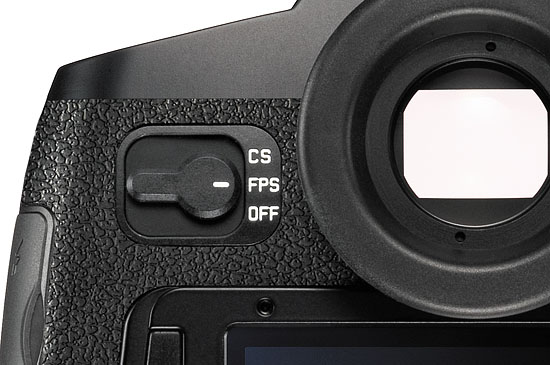
S2 product manager Stephan Shulz explained to me how the S2 works with both shutters. He outlined the firing sequence as follows:- Shutter release is pressed
- Mirror goes up
- Aperture diaphragm closes down to desired f-stop
- Focal plane shutter opens
- Camera starts exposure electronically
- Central shutter closes
- Aperture opens
- Focal plane shutter closes
- Central shutter opens
- Mirror returns
What’s interesting to note in the sequence is that the exposure starts electronically. This allows for a simpler movement by only having the central shutter close to end the exposure rather than open and close. Mirror blackout time and shutter lag are both minimized, which I found more than acceptable in my own testing.
Leica CS Lenses
The Leica CS lenses are virtually identical to their non-CS lens counterparts. They have exactly the same optical design and the only exterior visual cue is the small white CS letters engraved after the focal length on the lens barrel. Because they have an added shutter mechanism, the CS versions are a couple ounces heavier, but in practice, the added weight is not noticeable.
Not all S lenses will be available in CS versions. The 30mm Elmarit-S, 35mm Summarit-S, 70mm Summarit-S, 120mm APO-Macro-Summarit-S and the 180mm APO-Elmar-S will all be available in CS versions, but upcoming lenses like the 24mm super wide angle and the 30-90mm zoom will only come in non-CS flavors.CS Lens Upgrade Program
Leica is still offering a CS lens upgrade program for anyone that has purchased a brand new non-CS lens up until the official release of the CS lenses. Essentially, you would only have to pay the difference in price between the non-CS and the CS version, trade-in the old lens, then take delivery of a new CS lens. While we don’t have all the details on how the logistics will work, Leica has been very clear that the upgrade program only applies to first owners who have purchased brand new lenses from an authorized dealer. In other words, used lenses don’t qualify.
Actually shooting with CS lenses
Thanks to our friends from Leica Germany, we were able to get a couple days to test two CS lens prototypes, a 70mm CS and 120mm CS. The lenses, we were told, were QC samples with over 150,000 shutter actuations each.
Without time to organize a full shoot I called up our friend Amy, who was going to be working at an event on Fort Lauderdale Beach with her daughter Alex. Graciously, Alex agreed to do a little impromptu modeling for some casual testing. This was not the usual full-production shoot with assistants and hair/makeup. I kept the equipment simple with a single Profoto AcuteB 600R pack and one head with a Profoto white beauty dish. Triggering was accomplished with a PocketWizard Plus II transceiver on the camera and the built-in receiver on the AcuteB pack.
In this first shot, I wanted to give a reference point with just natural light taken wide-open. Without a focal plane shutter, I wouldn’t have been able to shoot at f/2.5 as there was an abundance of daylight, even on a slightly overcast day.
The next image is what you would get by using a strobe at 1/125th of a second, in other words, without a central shutter. To darken the sky further, you’d have to stop down to f/16 or more. This can be problematic for two reasons: sharpness-robbing diffraction and the need to use a lot of flash power on the battery pack. More power output translates to longer recycle times and reduced battery life.
Now, this is what is easily accomplished with a CS lens at 1/500th. Here, the ambient exposure is actually 1/500th @ f/5.6. By shooting at f/8, I am underexposing the background by one stop, deepening the color and providing a slight amount of pop. As an added benefit, I also am using almost two stops less power on my Profoto pack which equates to 1/4 the amount of power. This allows for much faster recycle times and longer battery life.
For the next shot, I turned the power back up to f/13 but kept the shutter speed at 1/500th. The background is now being underexposed by two and a half stops, making for a pretty dramatic image. The amount of flash power is exactly the same as the shot taken at f/125th above.
Of course, with a high sync speed of 1/500th we can push things a little further. Here, I set the ISO to Pull 80 (lowering the exposure an extra stop) and went one half stop further on the aperture to f/16. The background is now being underexposed by four stops! Overall, the image looks like it was shot at dusk. Almost 100% of the light on Alex is from our strobe. You can actually see that on her left arm there is a shadow. In reality, this is where the sun was hitting her arm. We’ve completely overpowered the sun and stayed away from having to resort to extremely small apertures where quality would have suffered. And, my little 600Ws battery pack with one head was fully up to the task of providing enough light.
Of course, there are in-between settings that don’t have to go to extremes. Here, it’s easy to make a pleasing blend of ambient and strobe by dialing back a little power and shooting at more open apertures, using the higher shutter speed alone to control the background. The use of the 120mm also helps to reduce DOF.
For the last set, I wanted to show what happens when you keep the overall exposure the same but vary the DOF. The first shot is taken at 1/125th @ f/8 to show the result with focal plane shutter only.
The second shot was taken at 1/500th @ f/4 at the same equivalent exposure. I lowered the flash power by two stops to compensate. The result is obviously much smoother and I prefer the overall look.
Conclusion
While my test was somewhat brief, I did appreciate the added flexibility of the higher sync speed on the CS lenses. The additional speed allowed for shallower depth of field and more ambient light control. The marginal increase in weight wasn't noticeable and the additional viewfinder blackout was minimal and not objectionable. For photographers shooting on location with strobes and requiring fast sync speed, the lenses will be an invaluable addition to the S system.
- Load More



